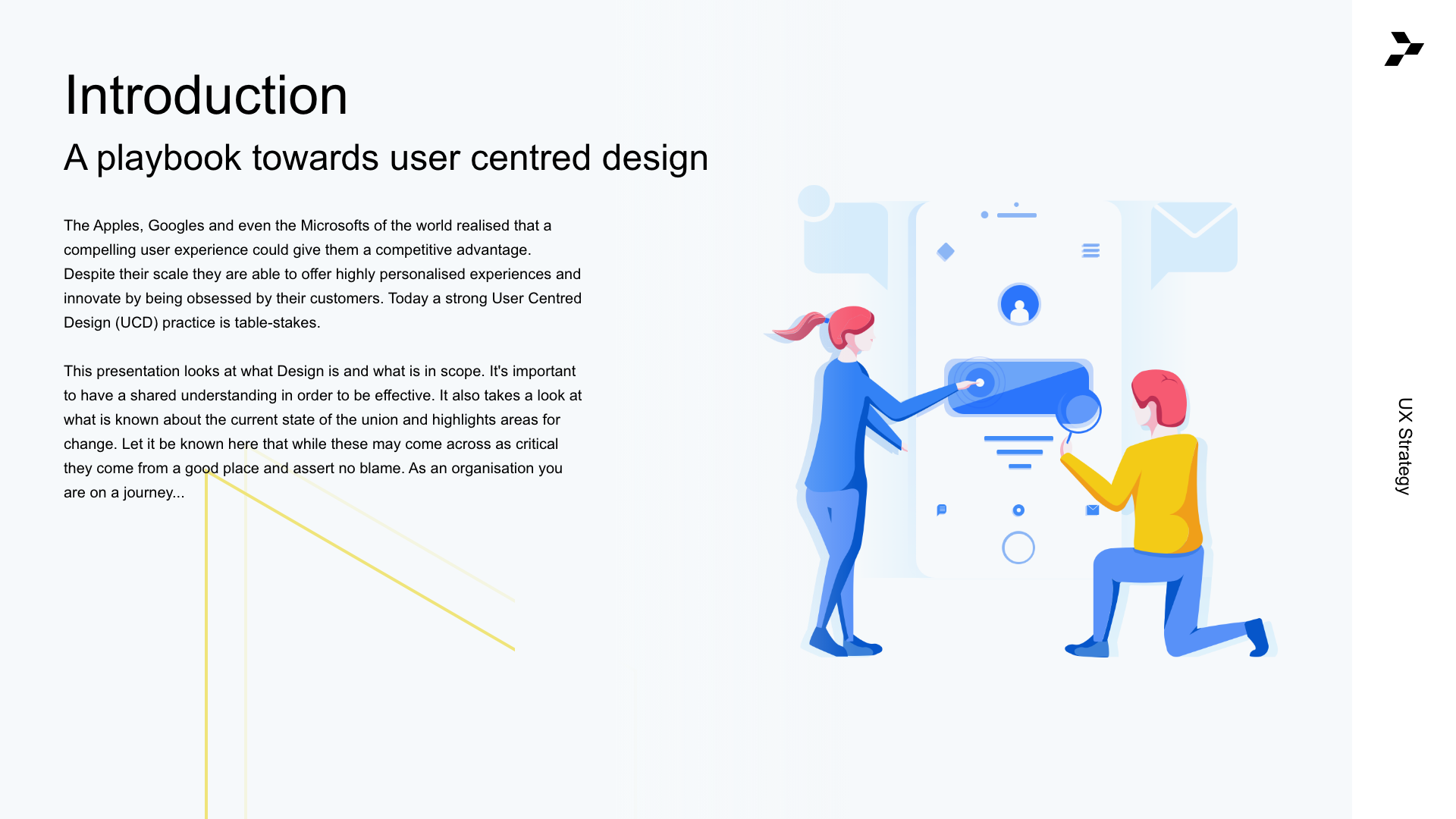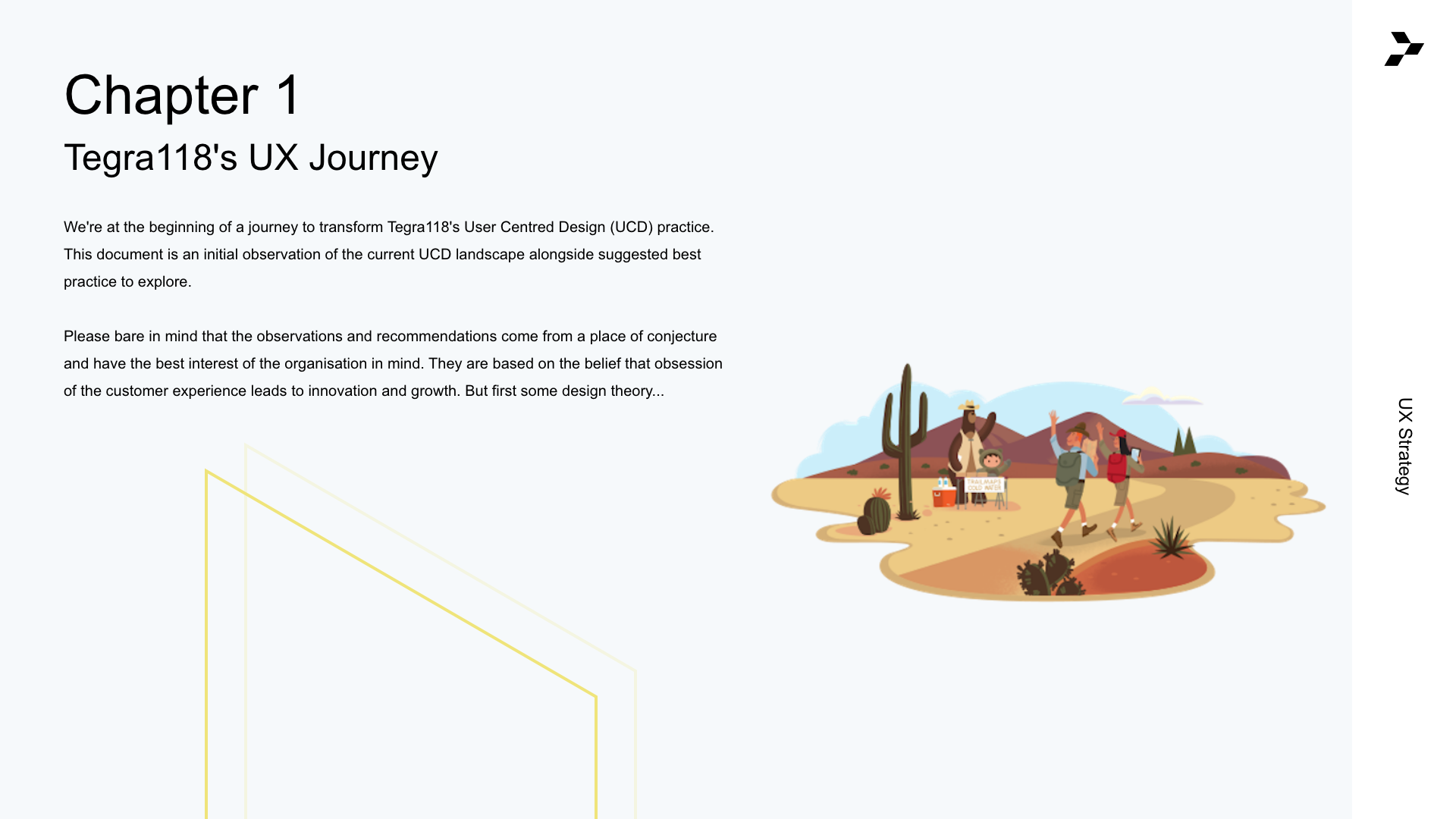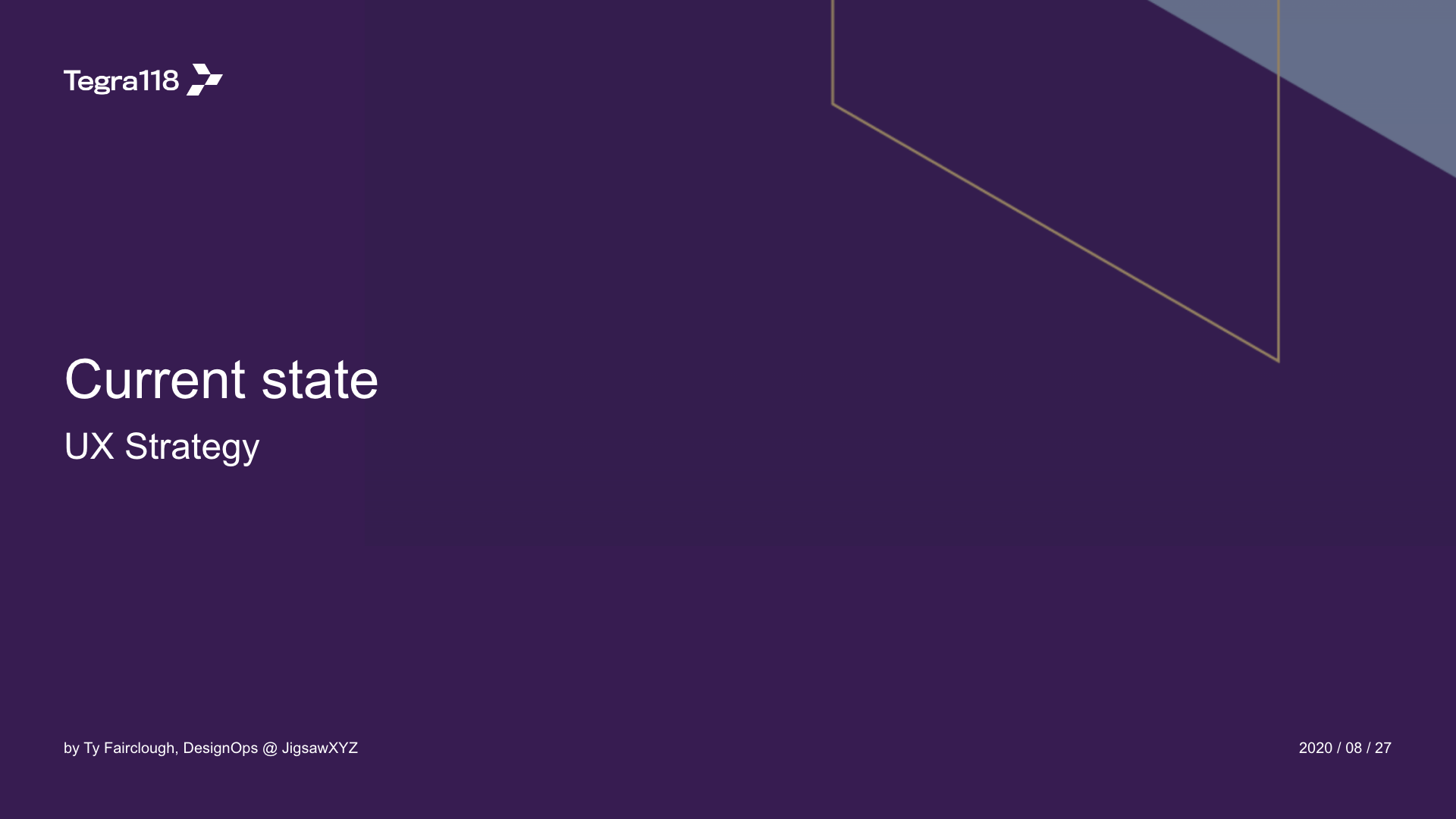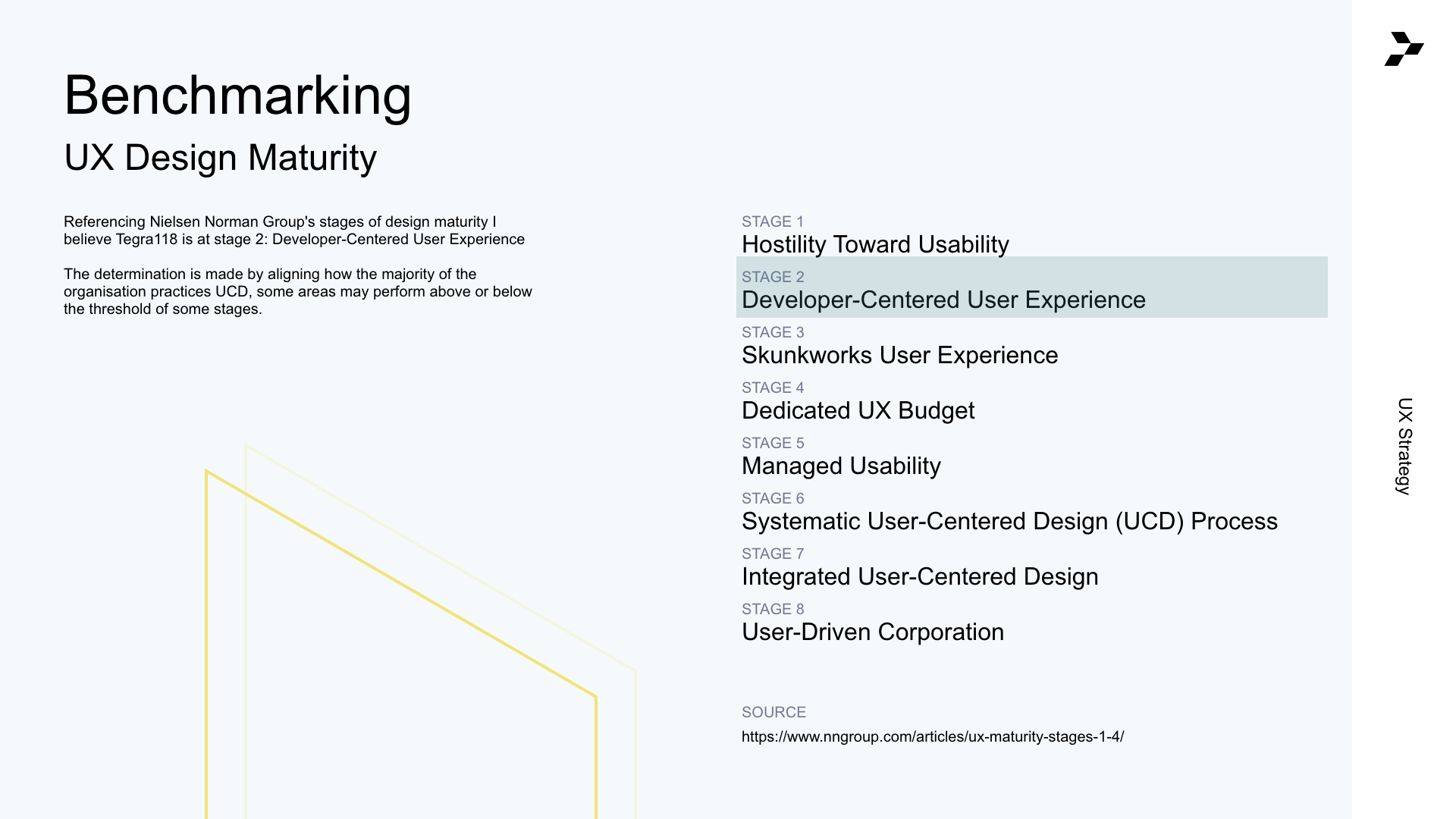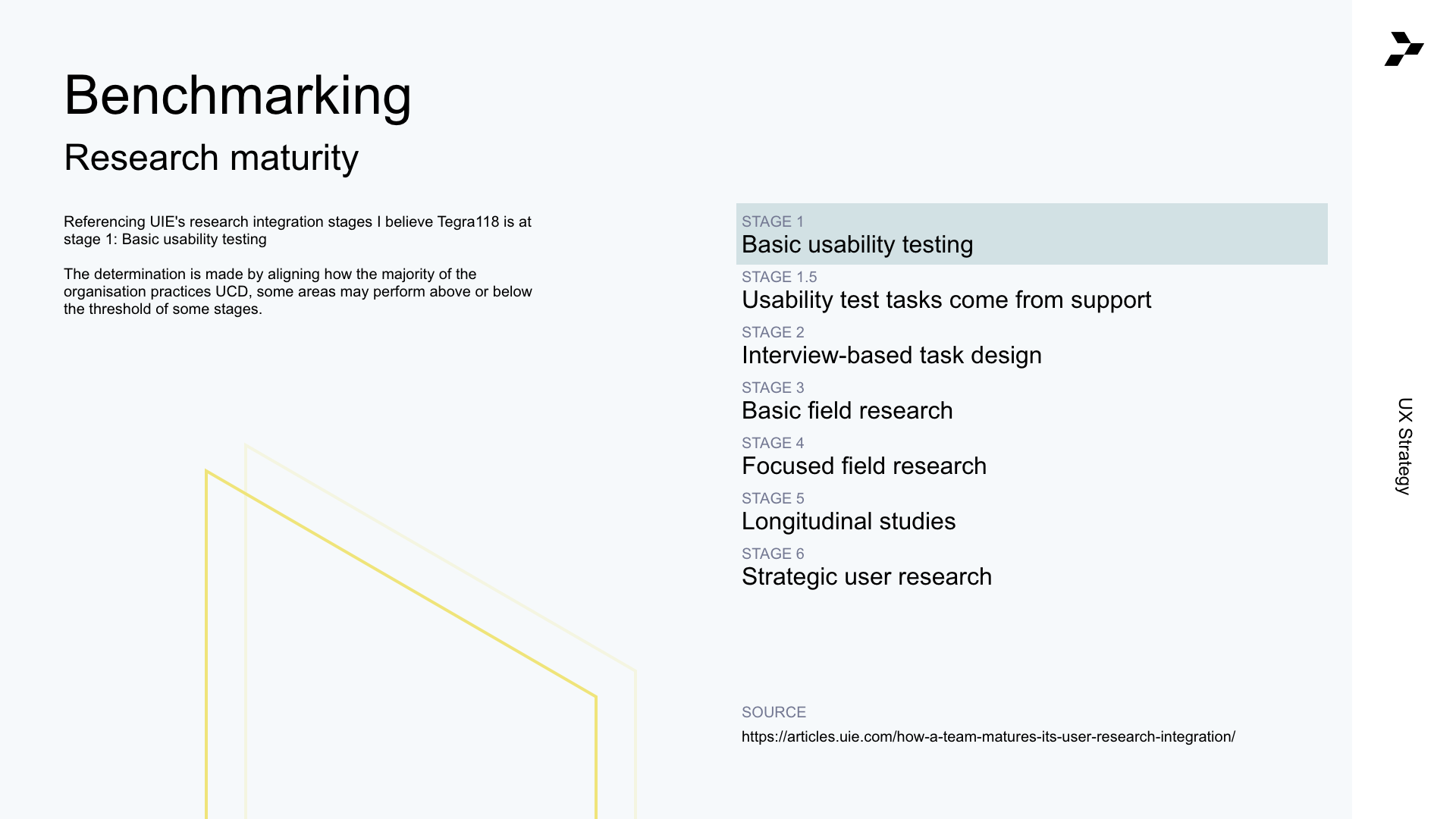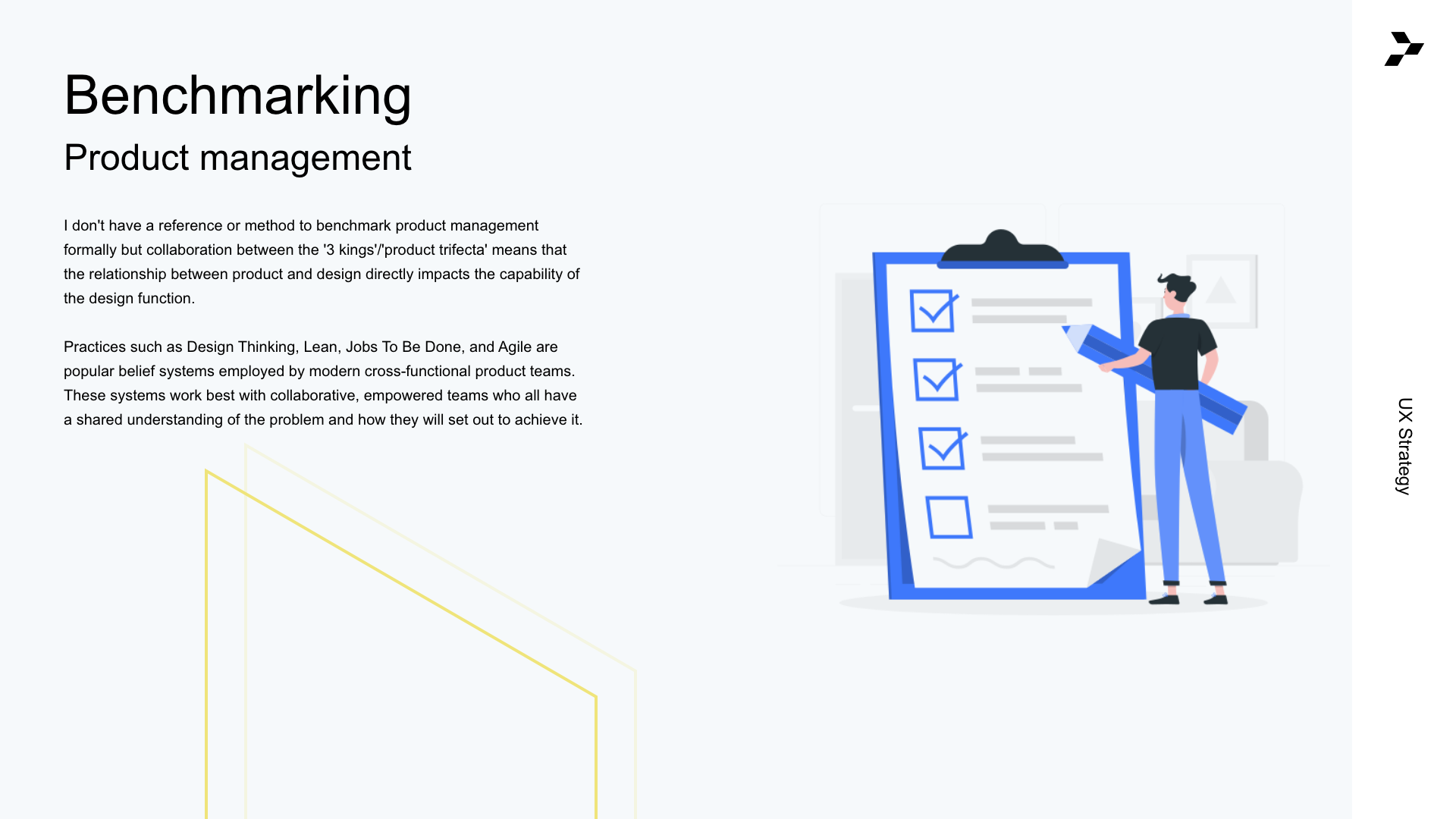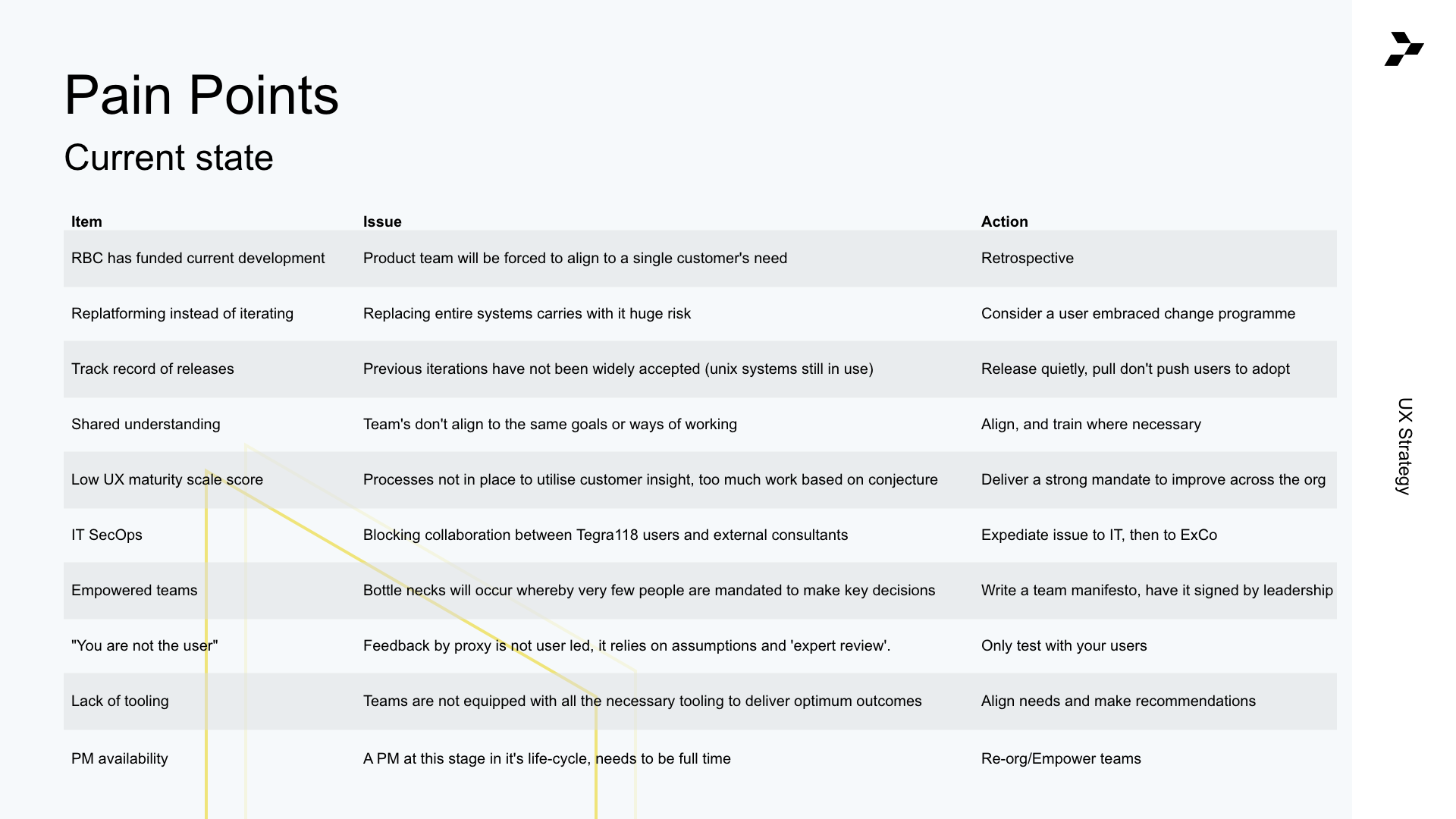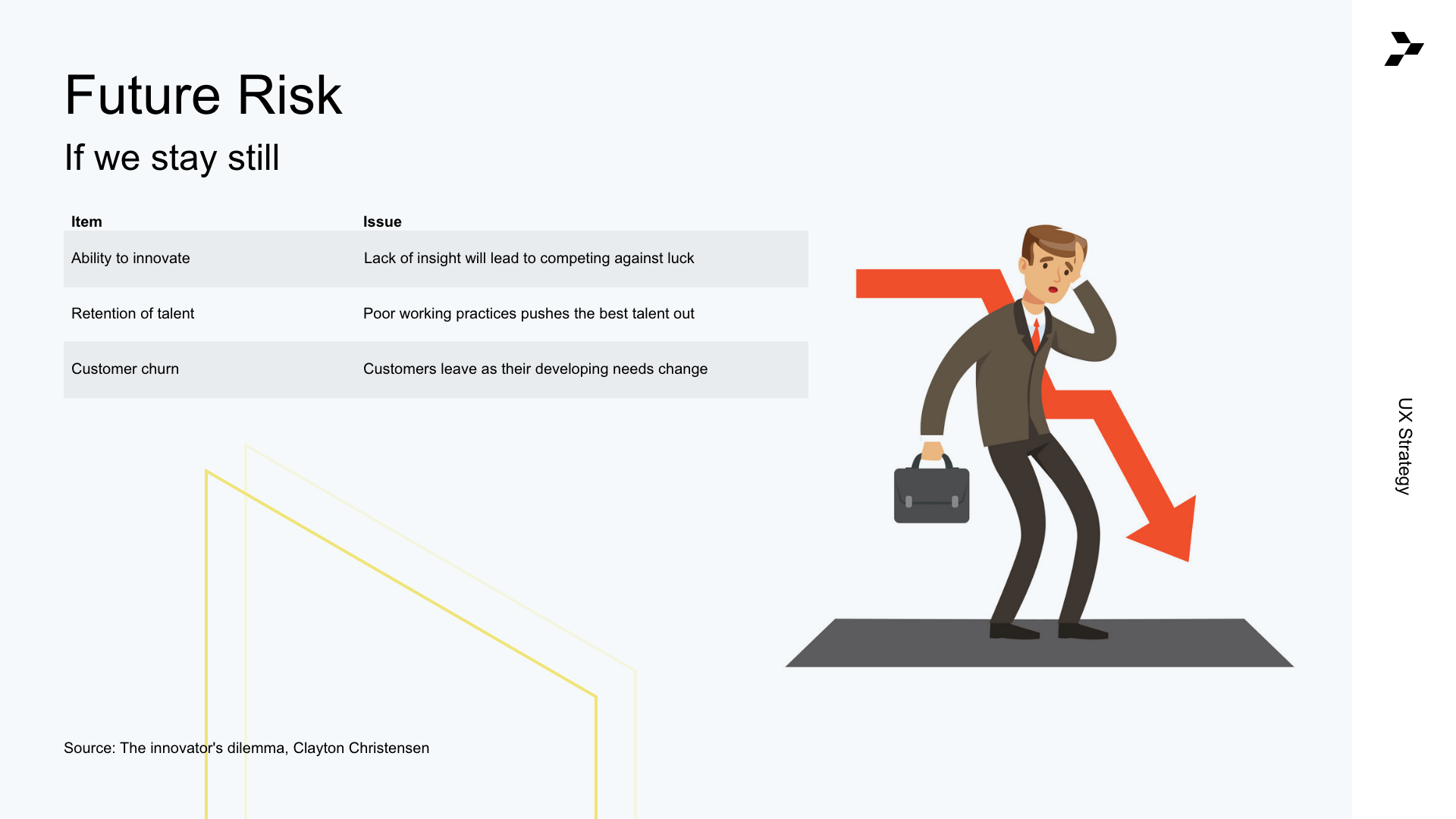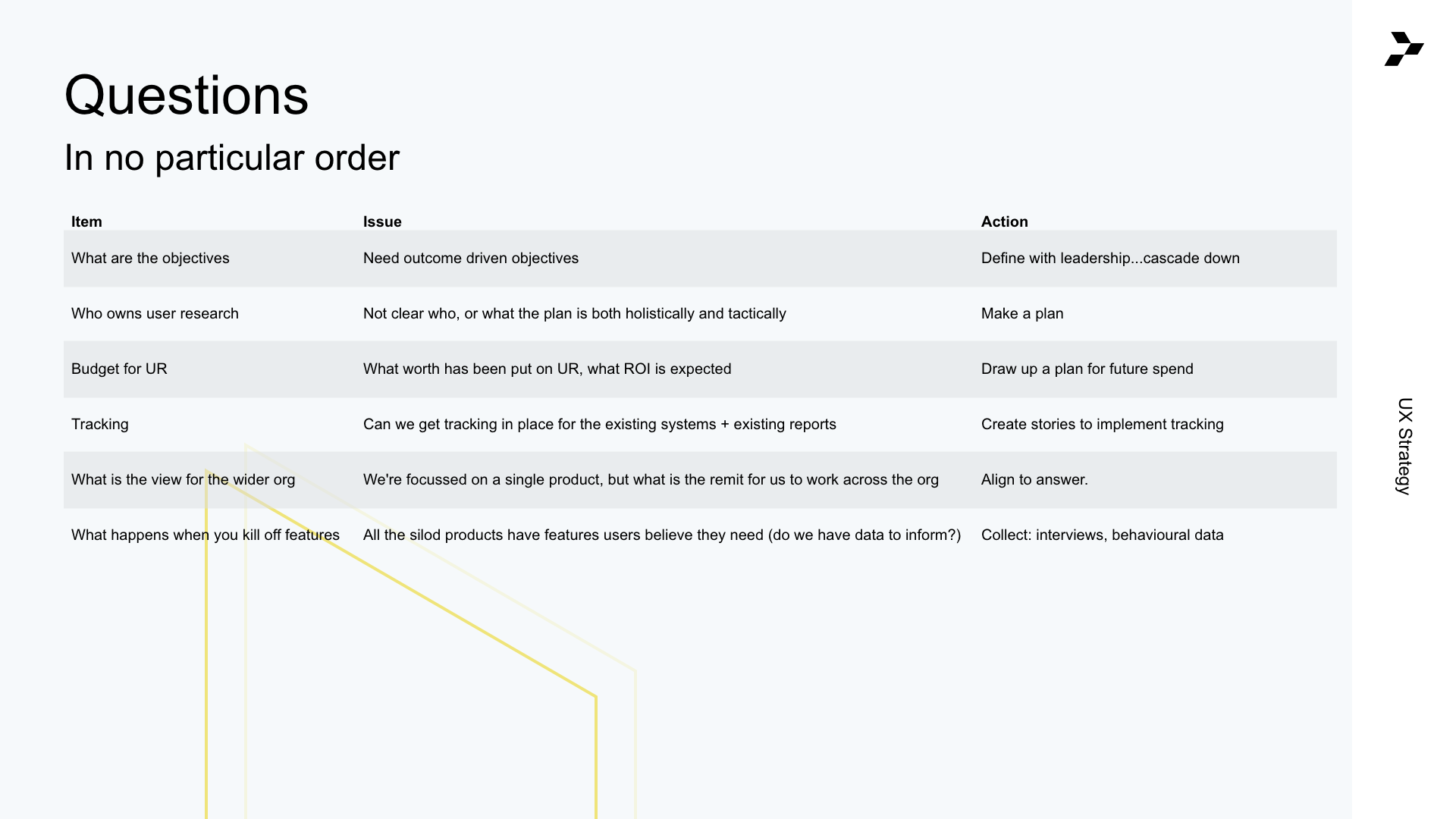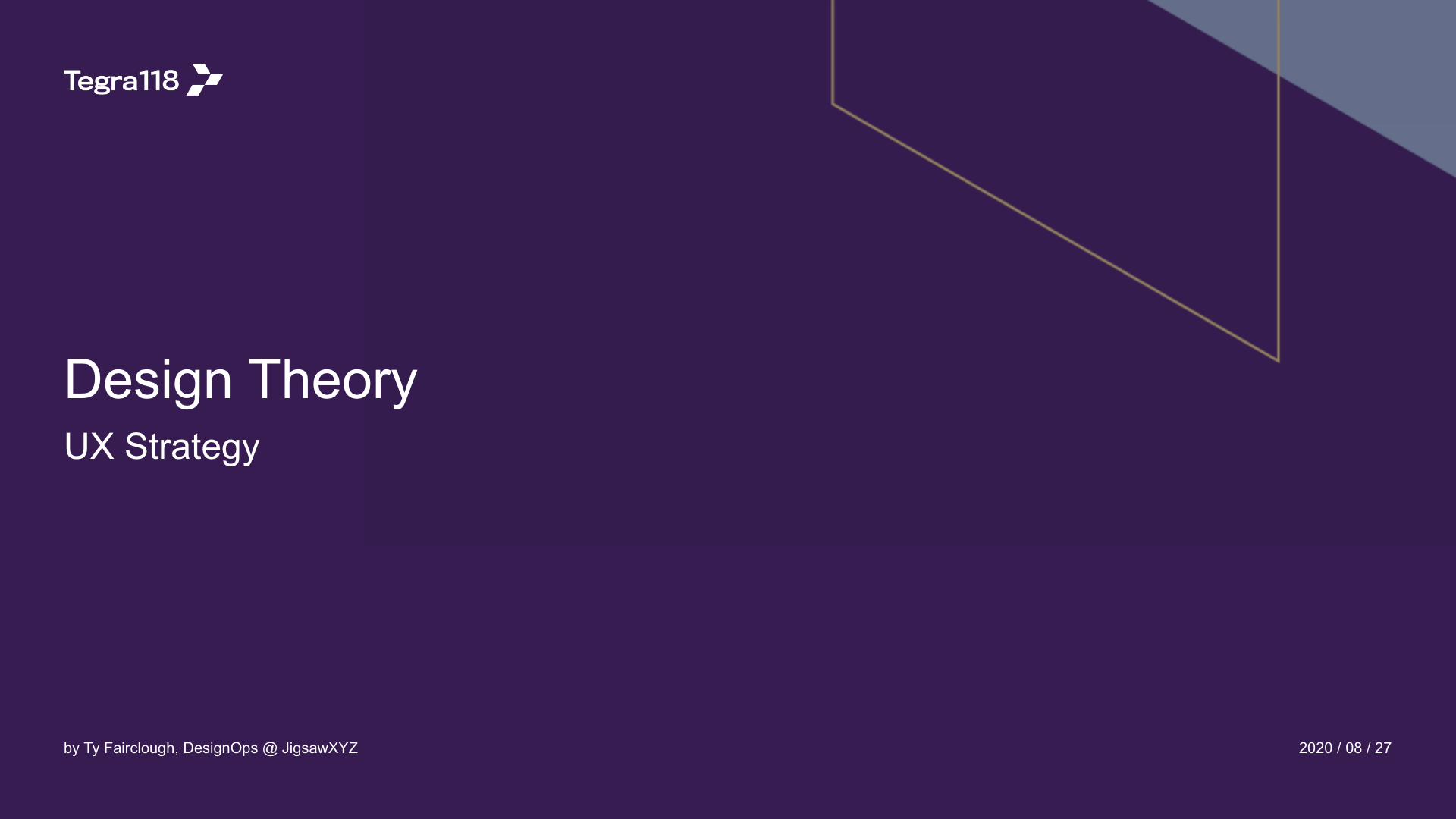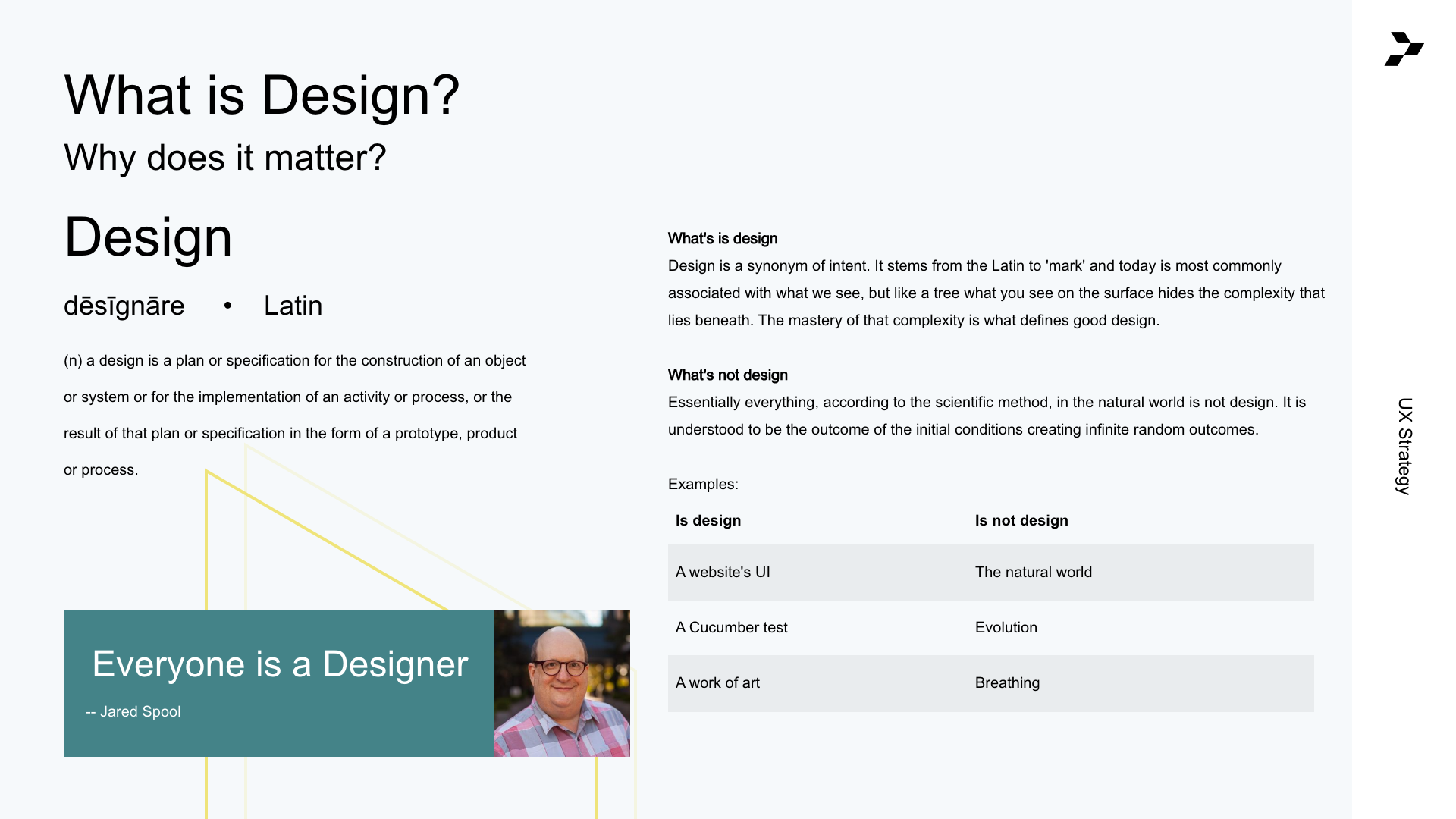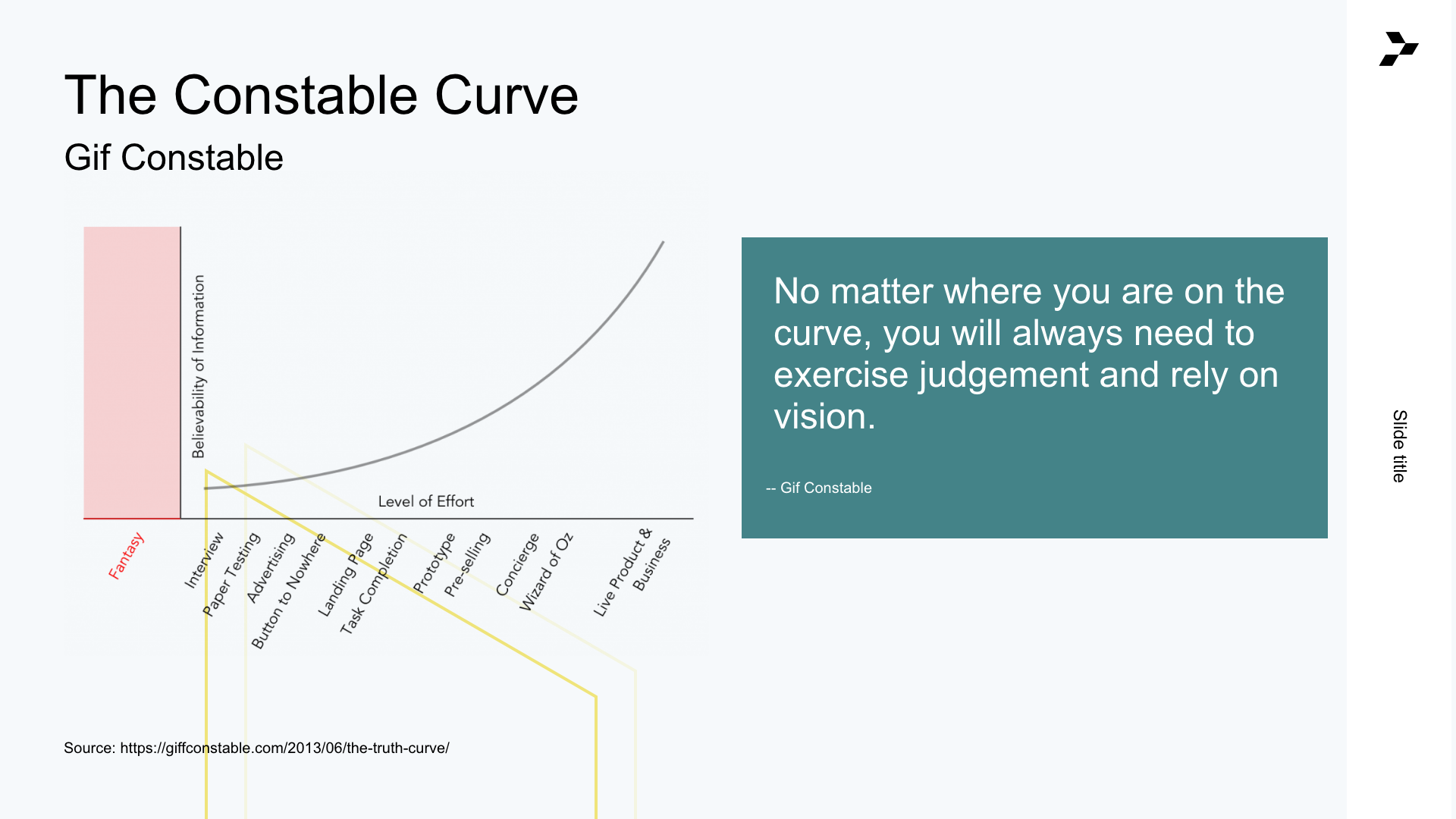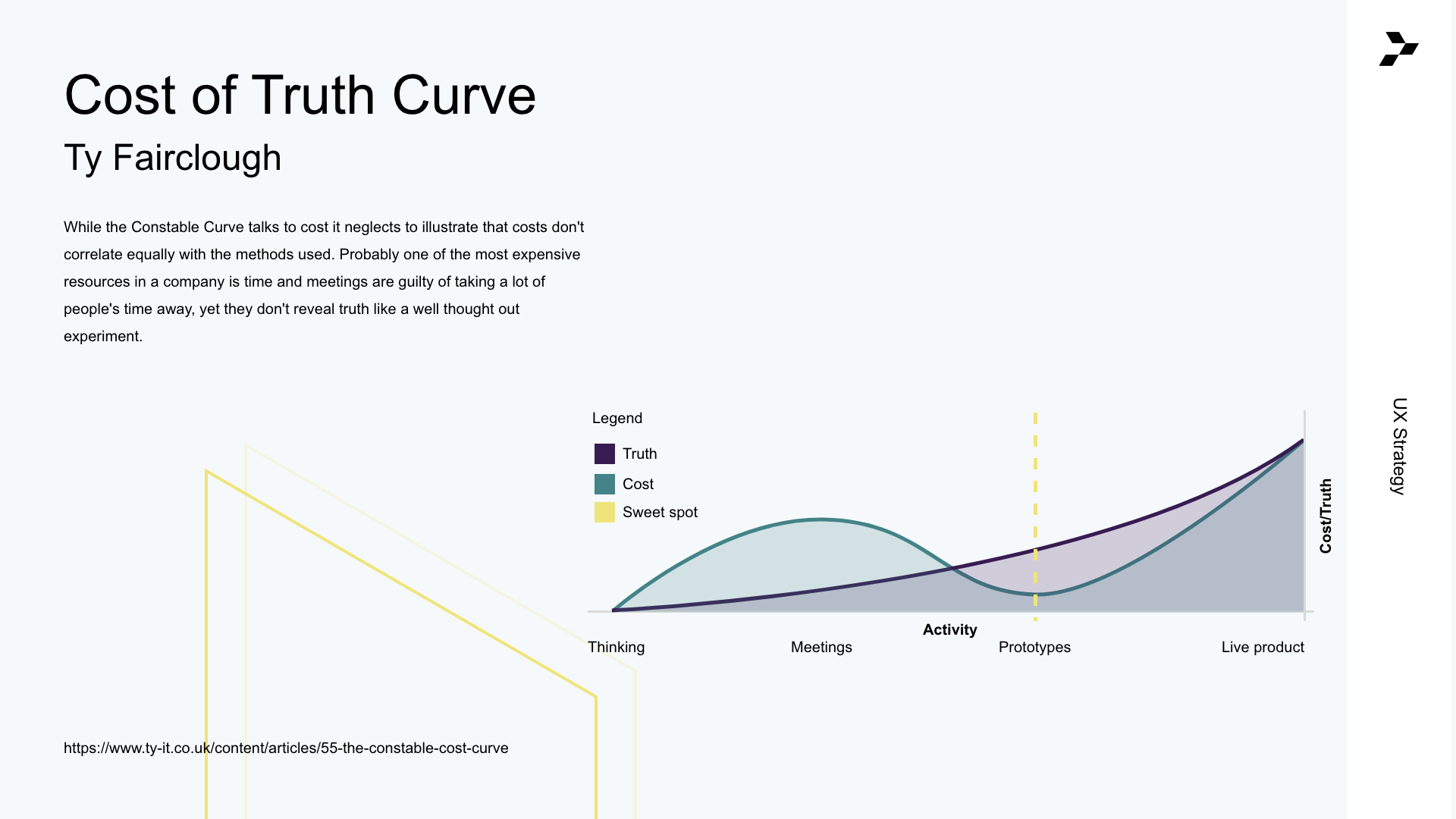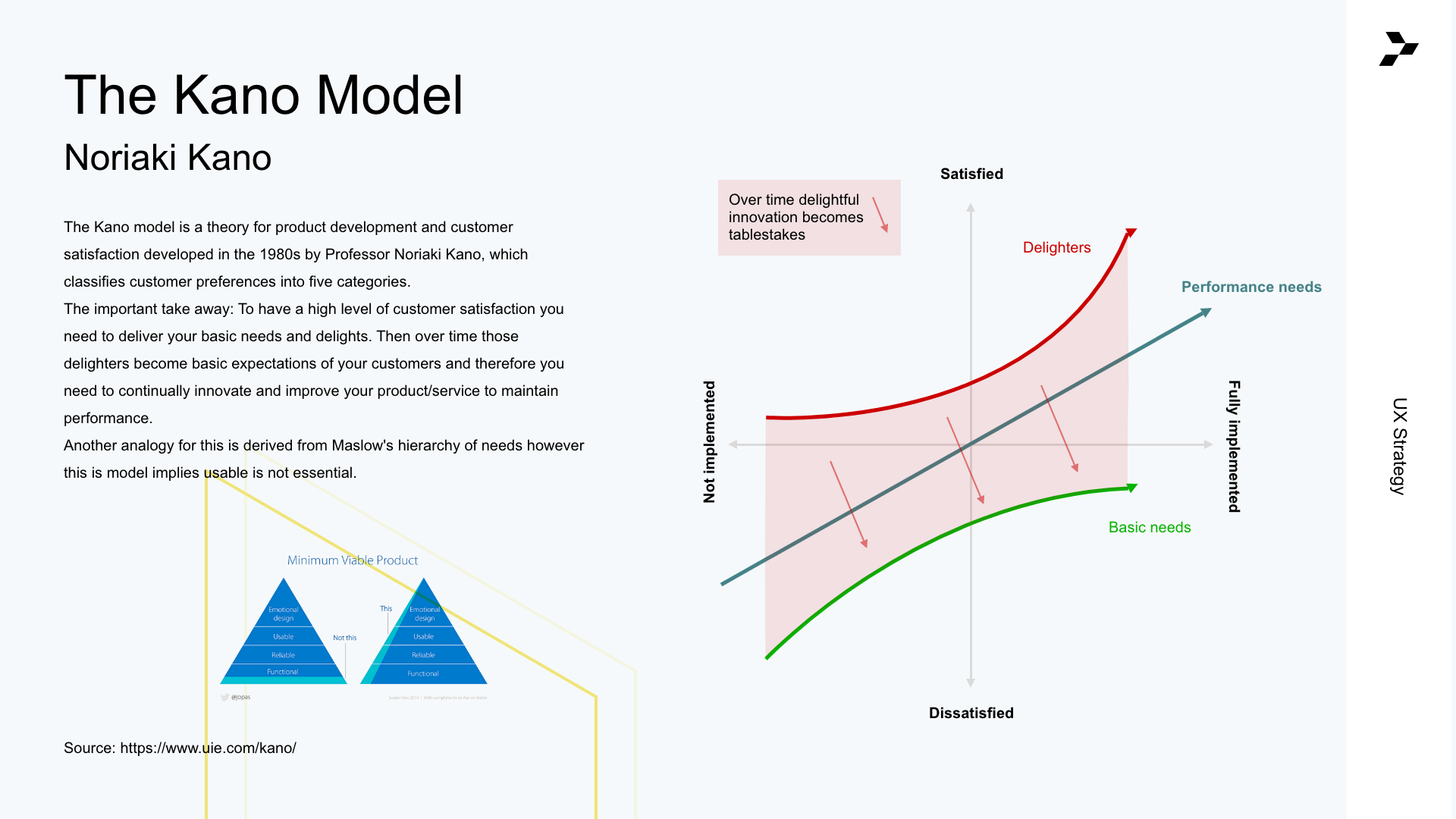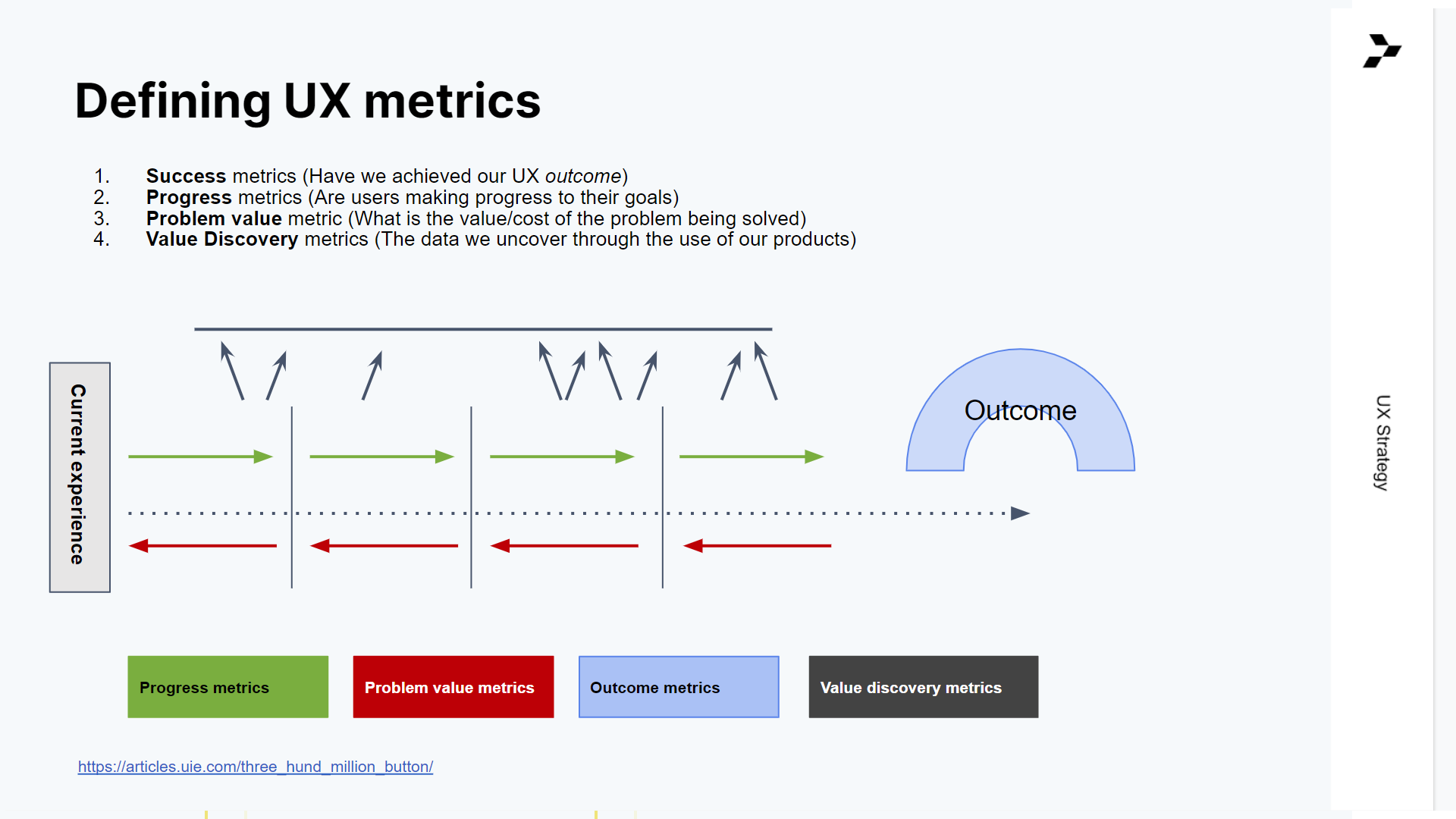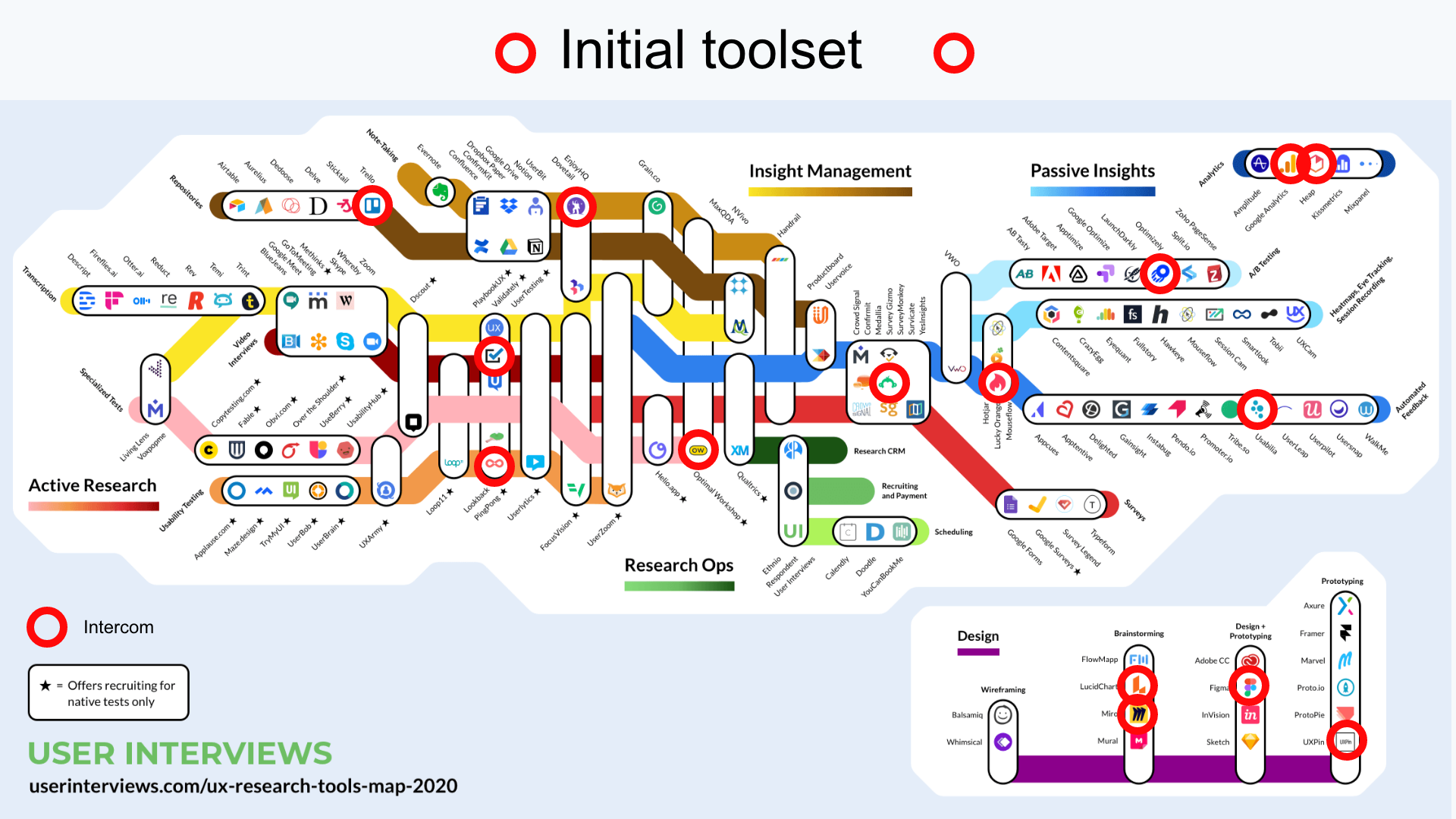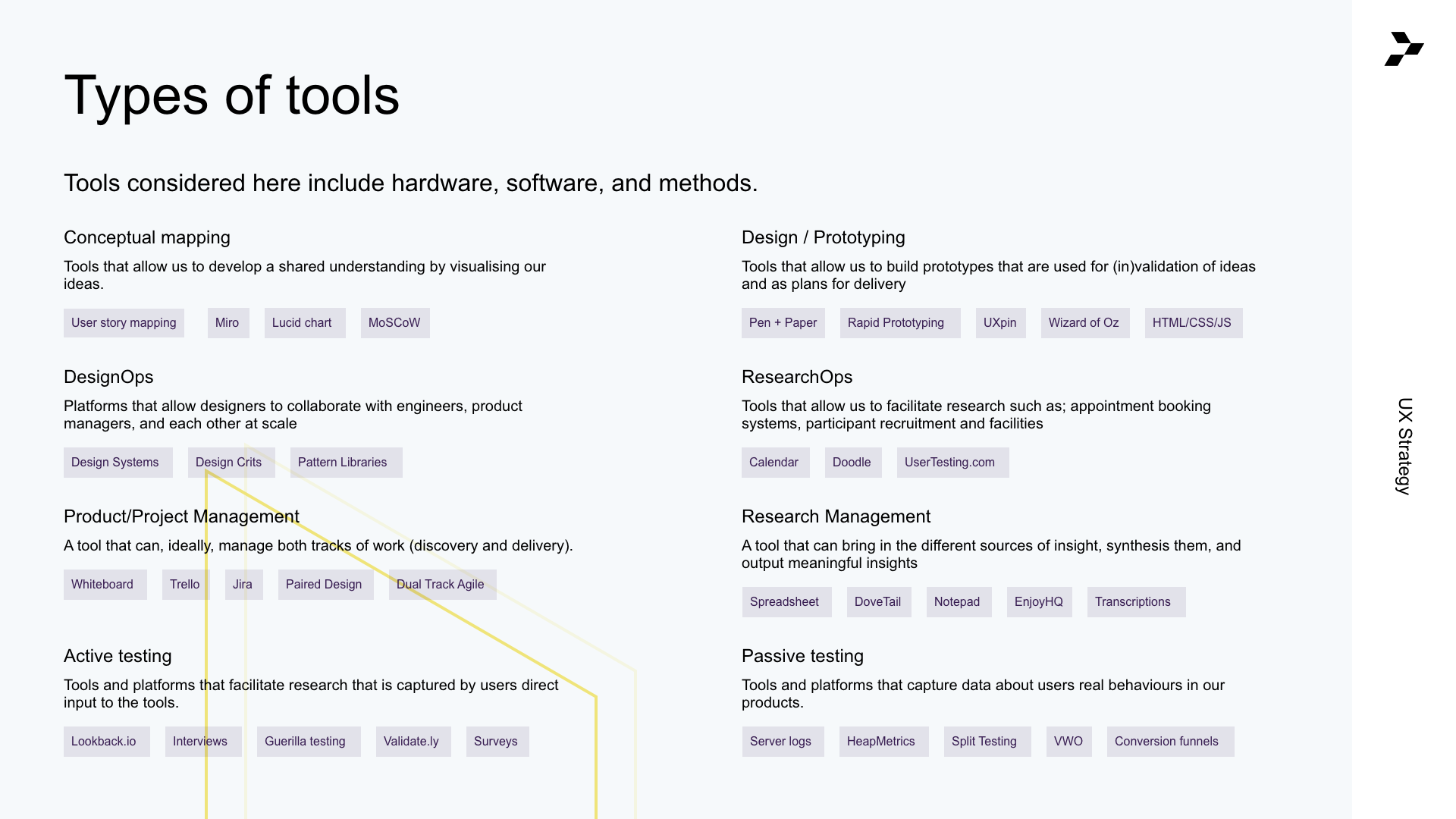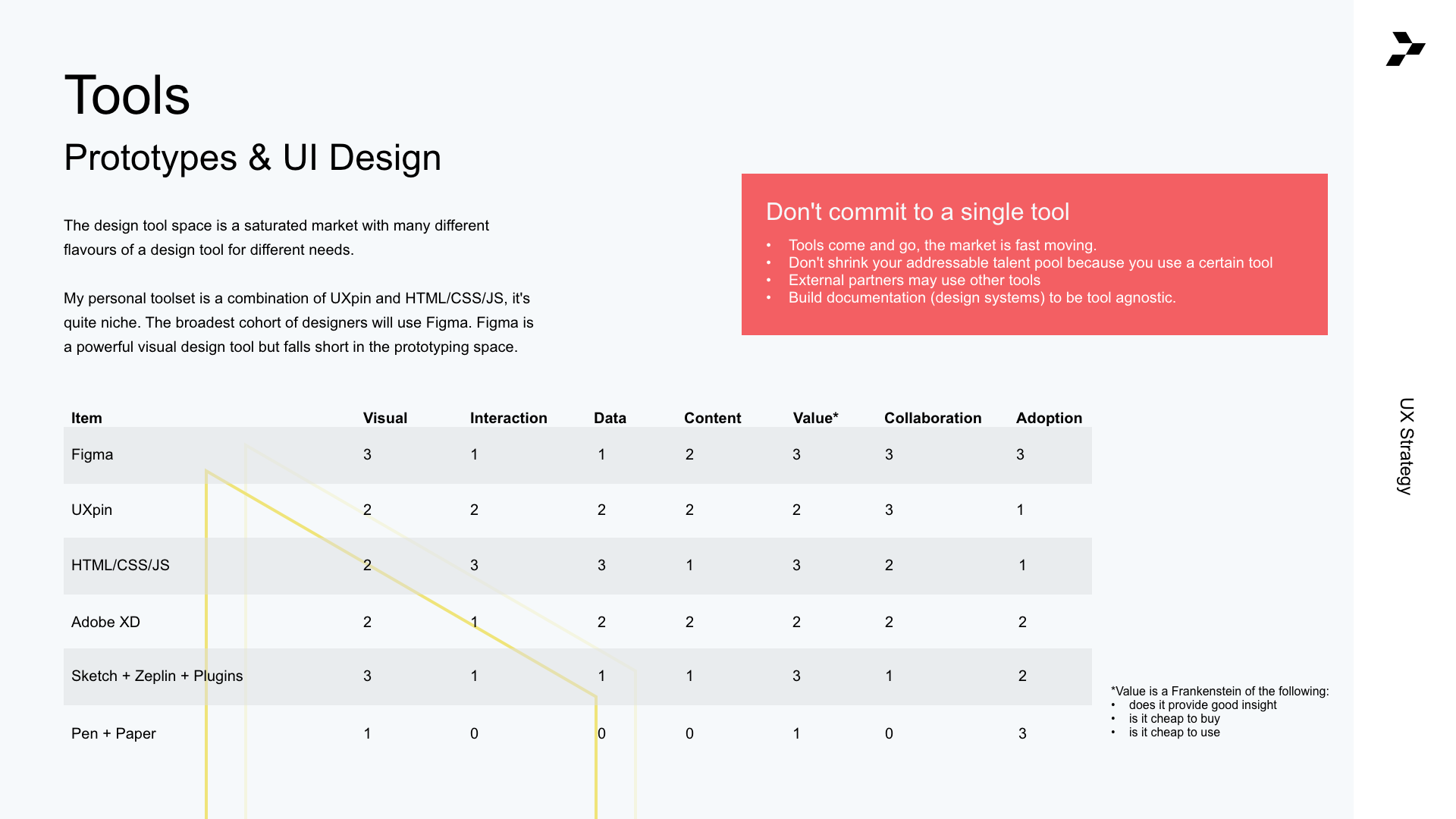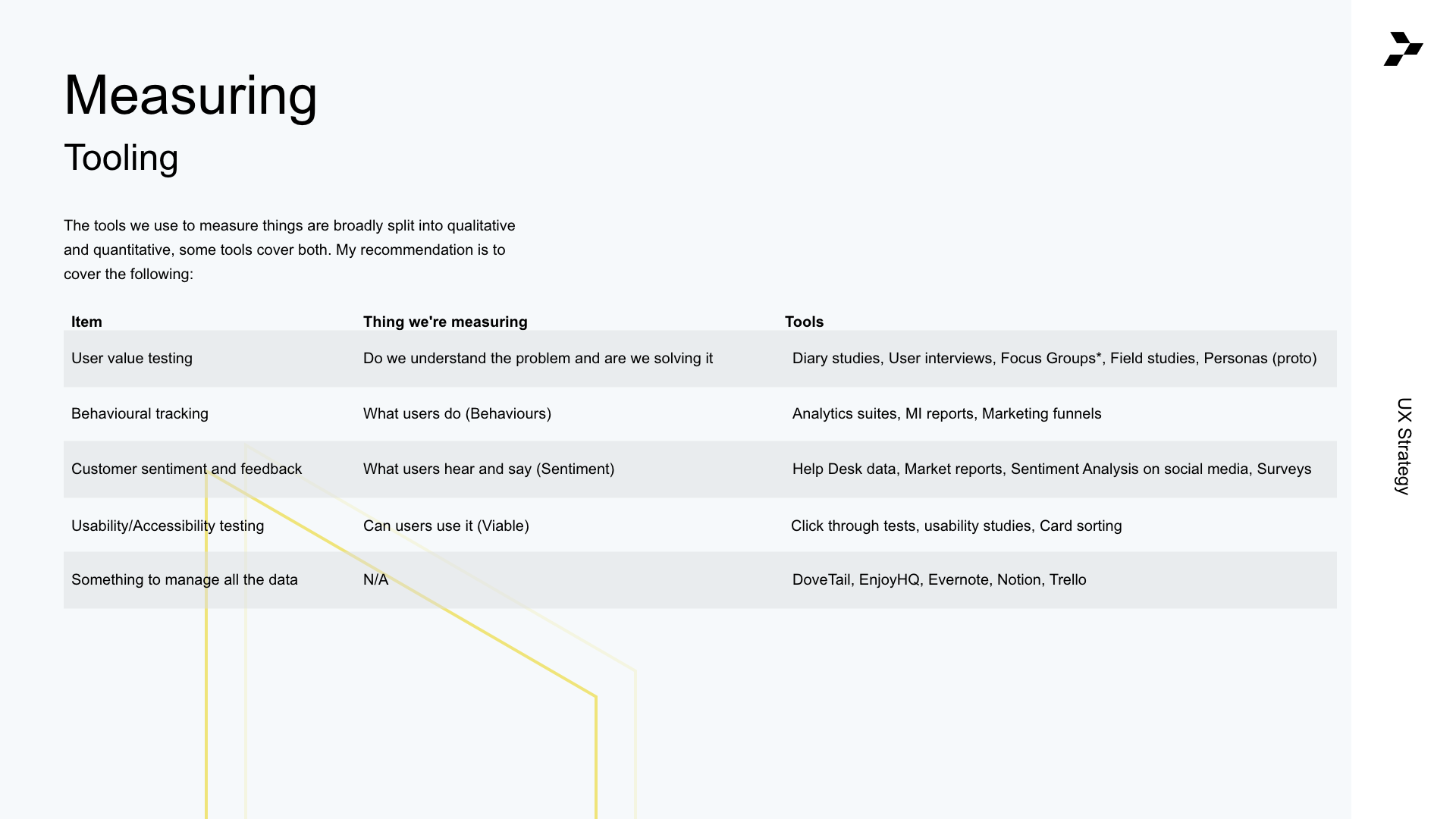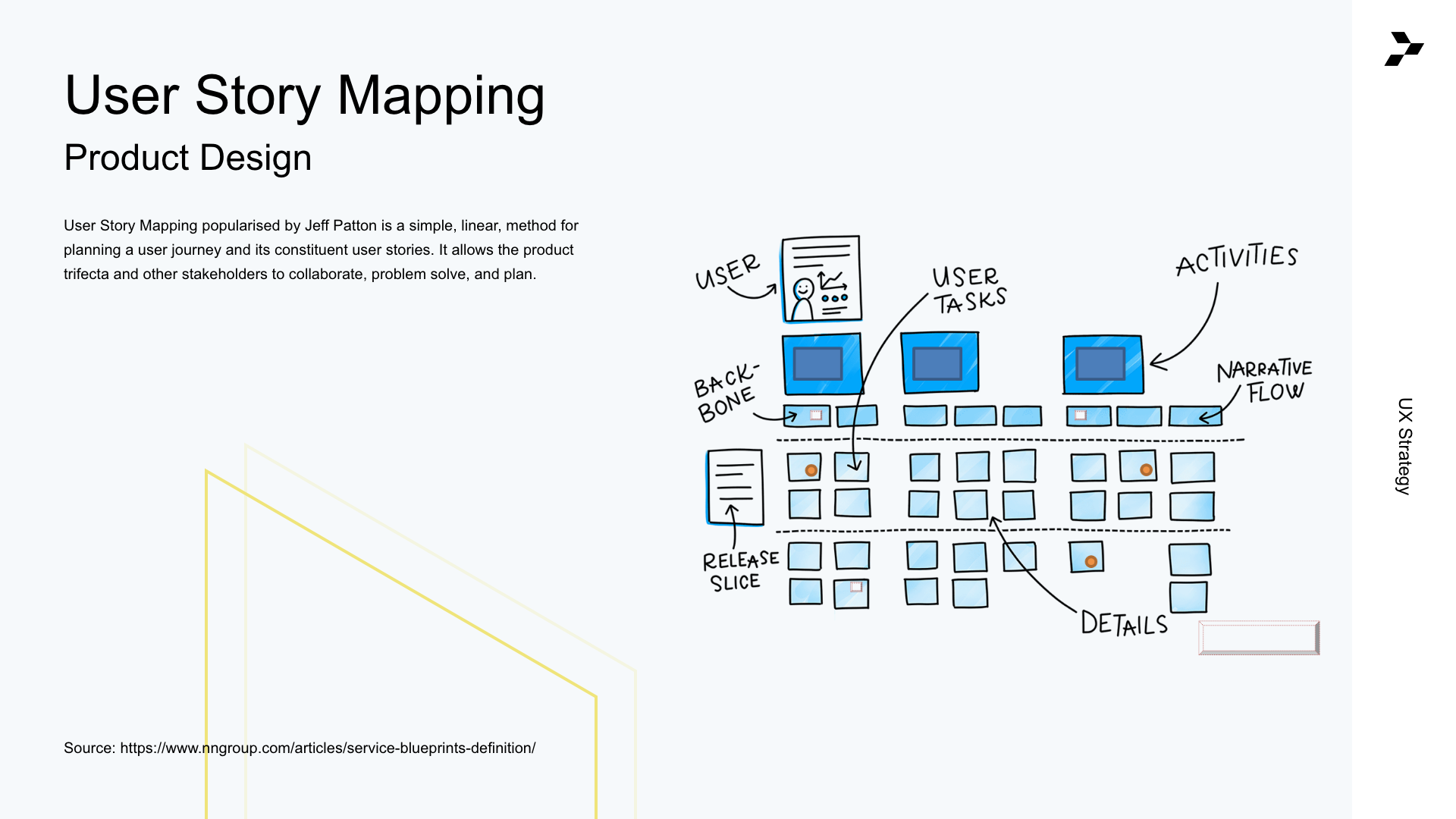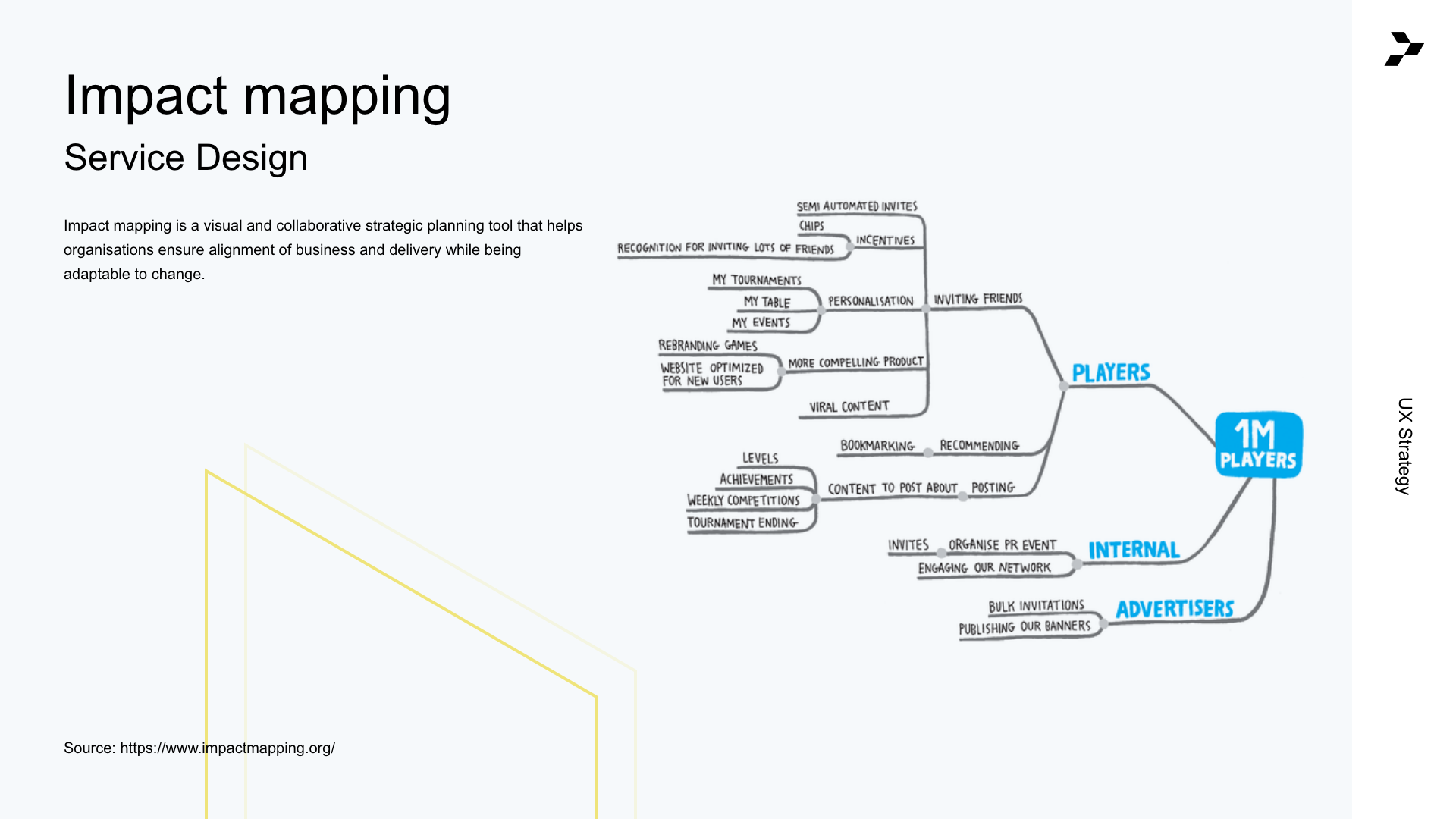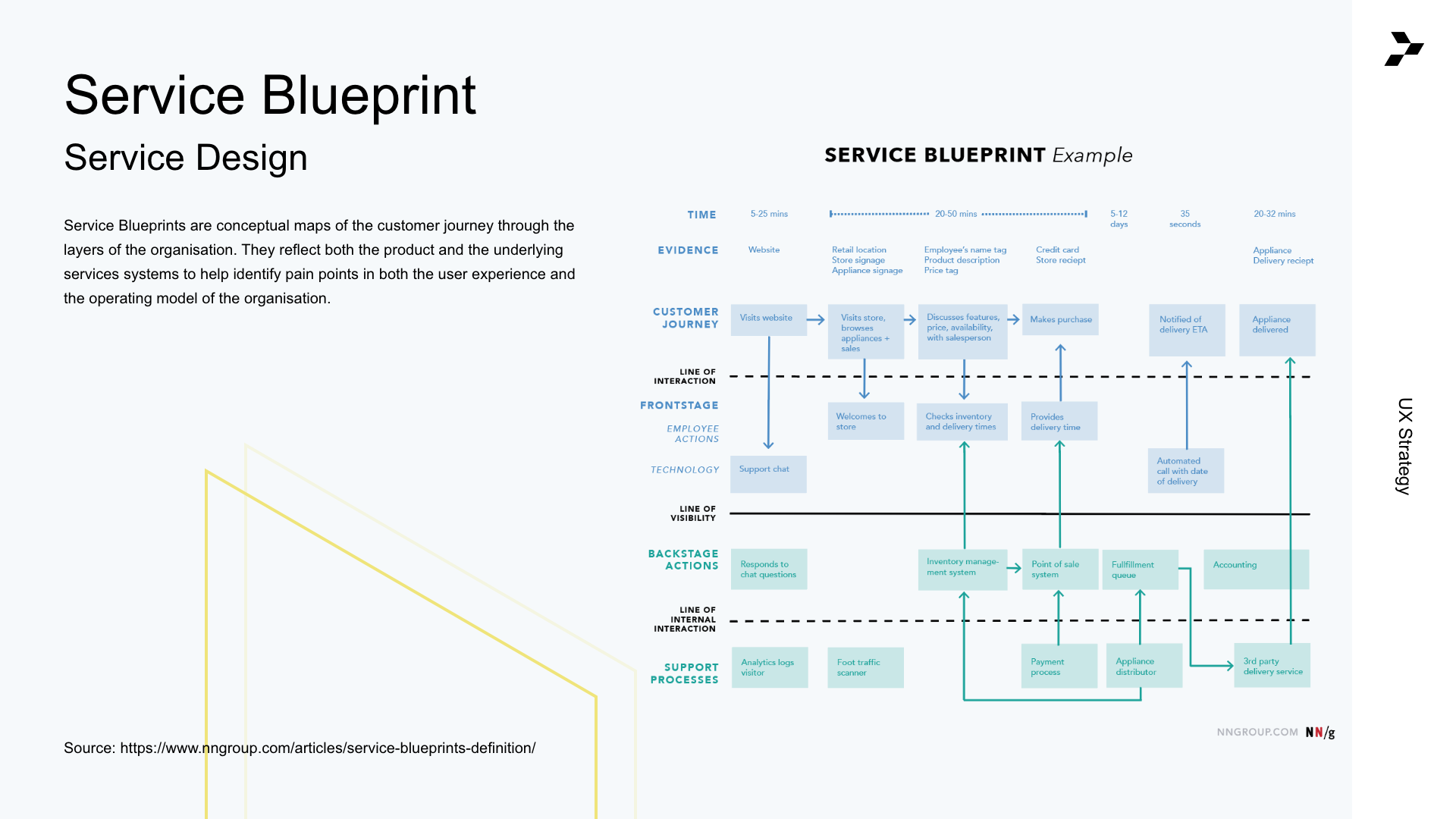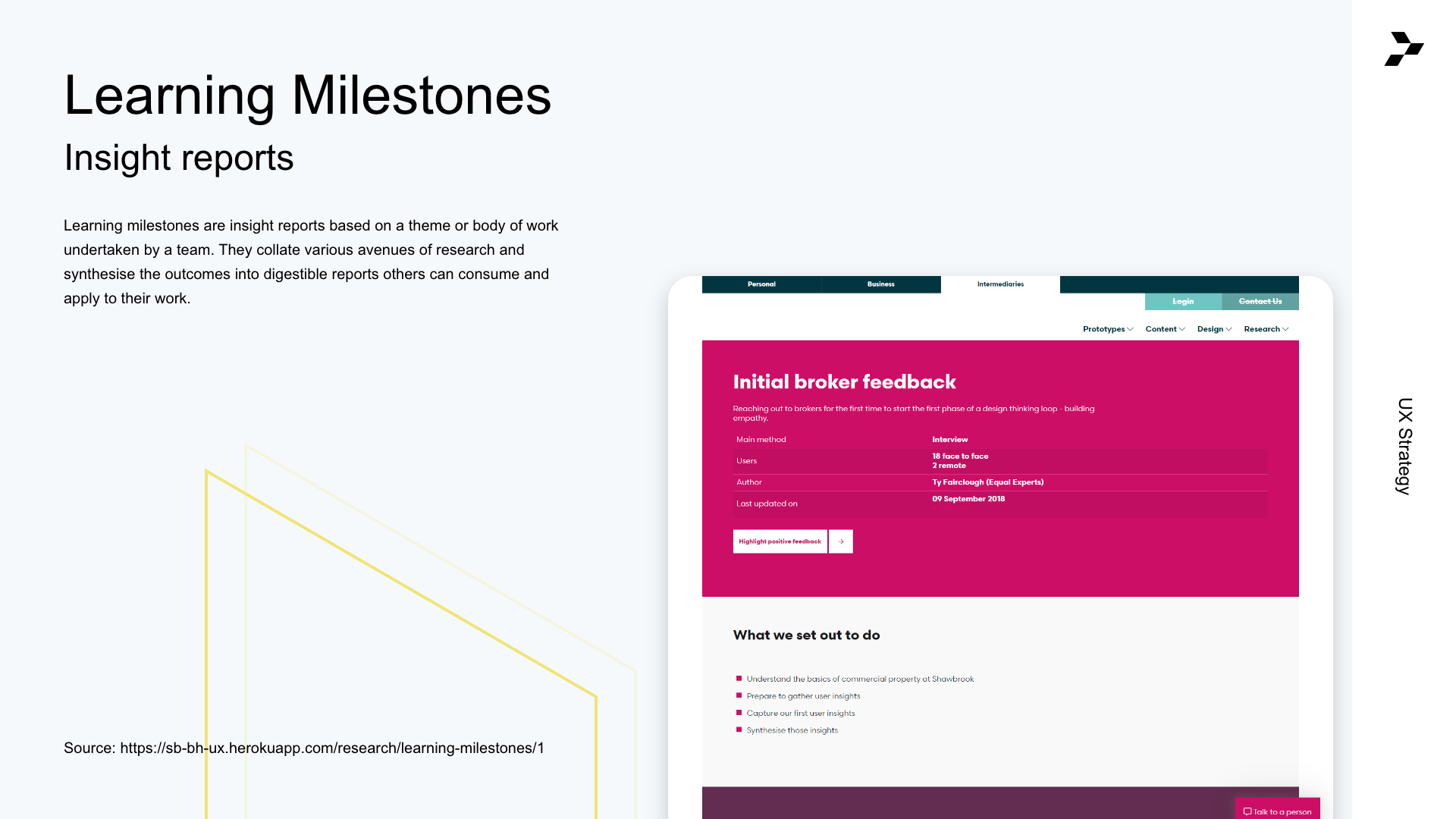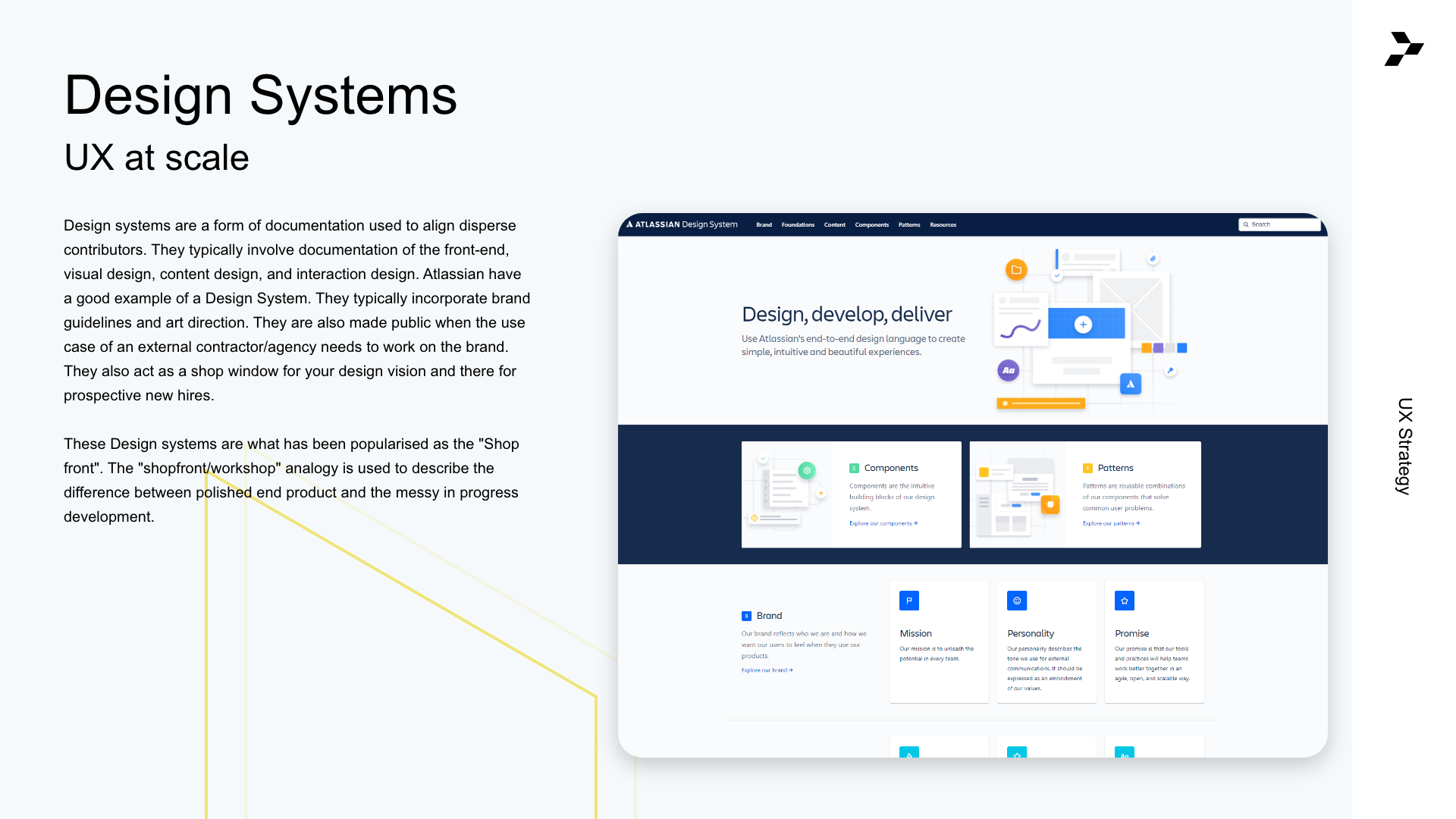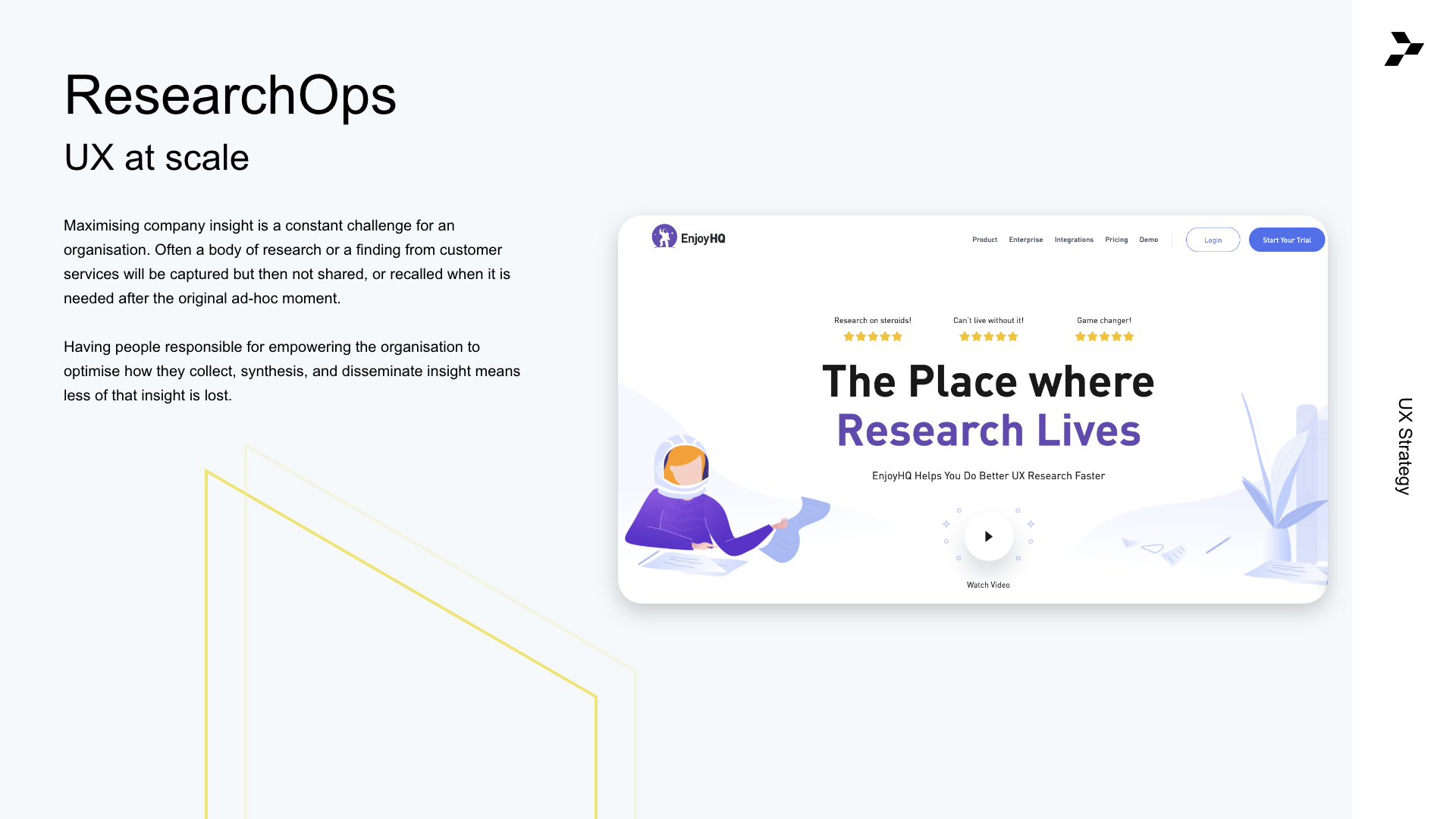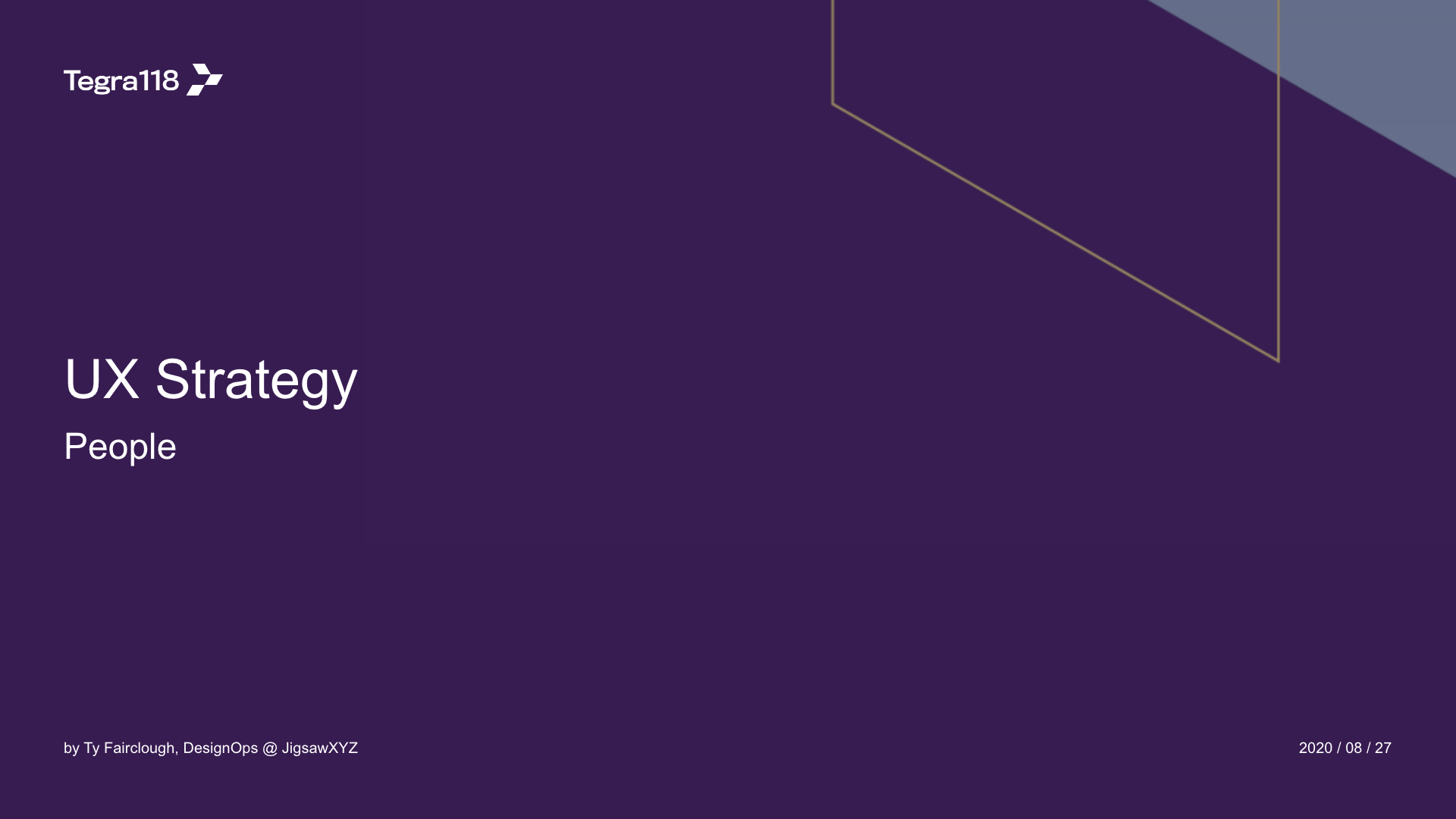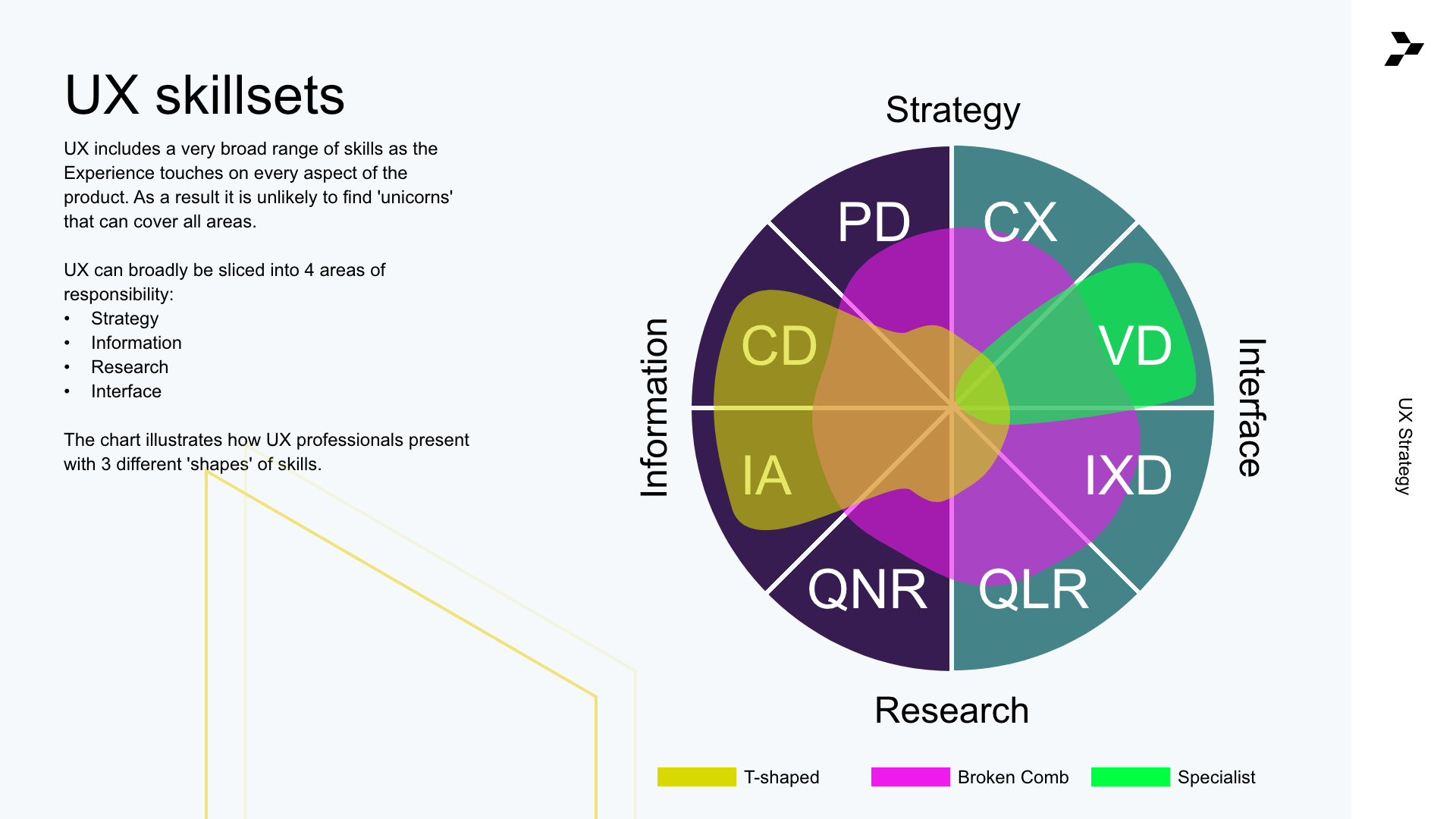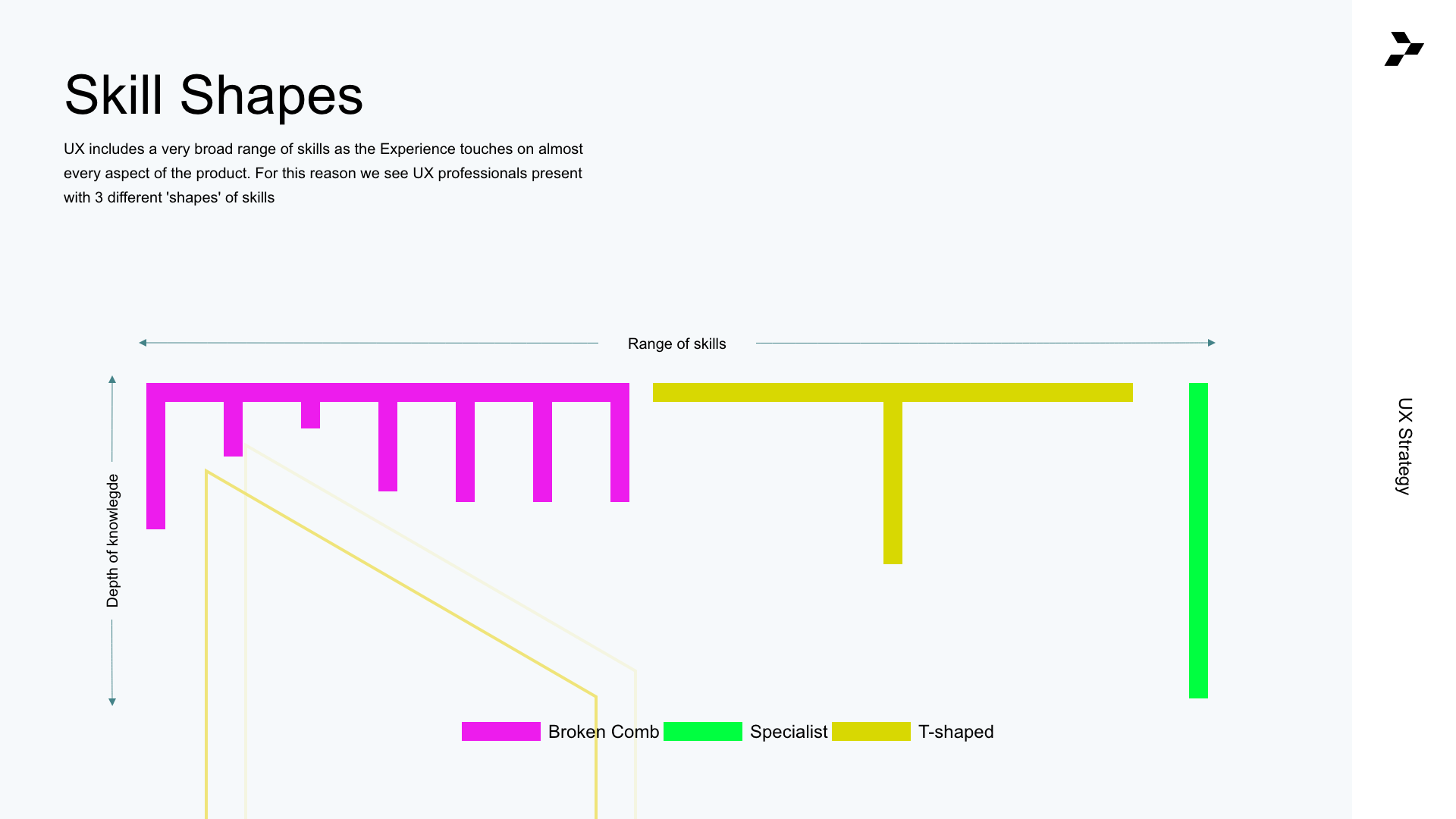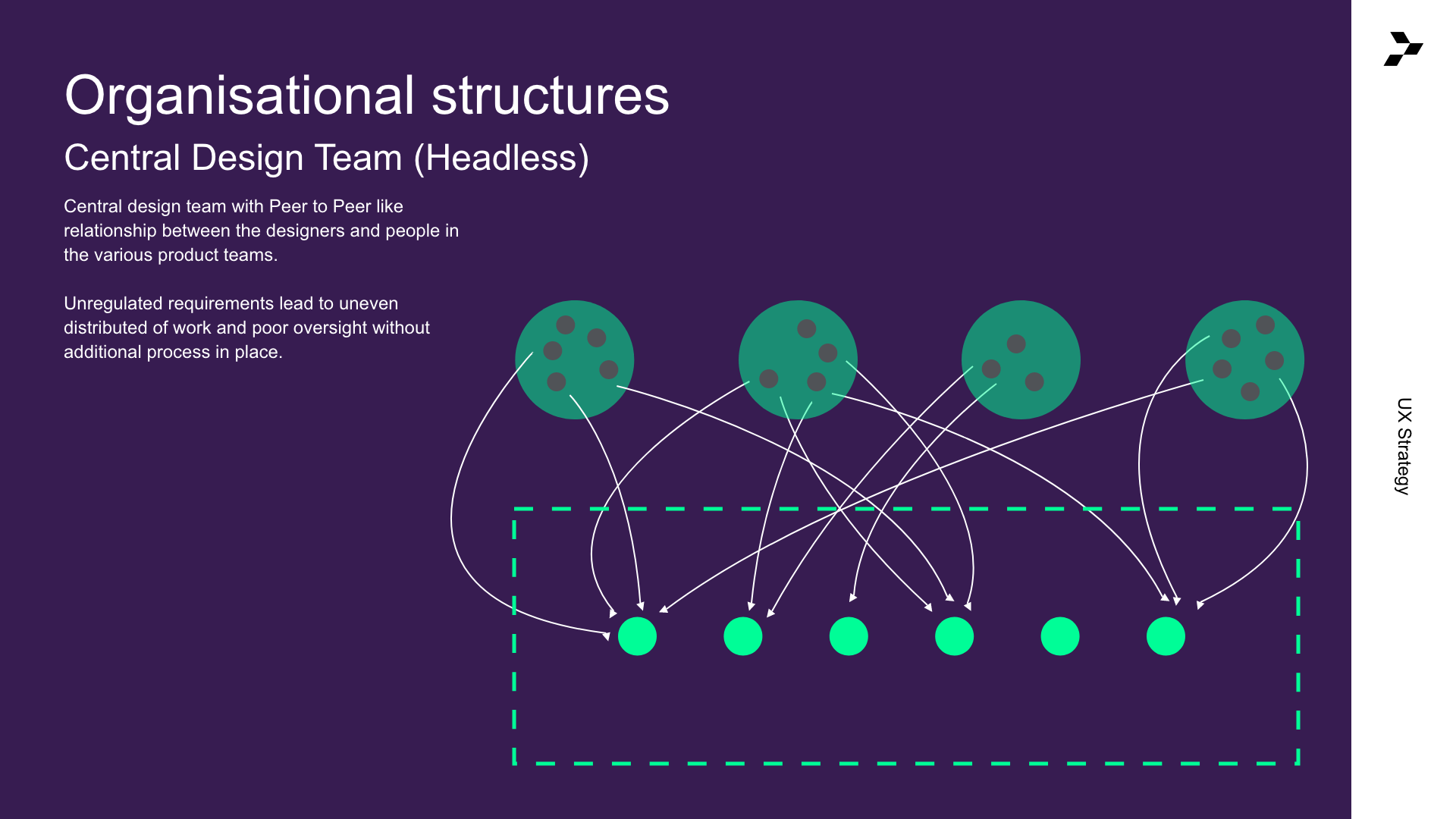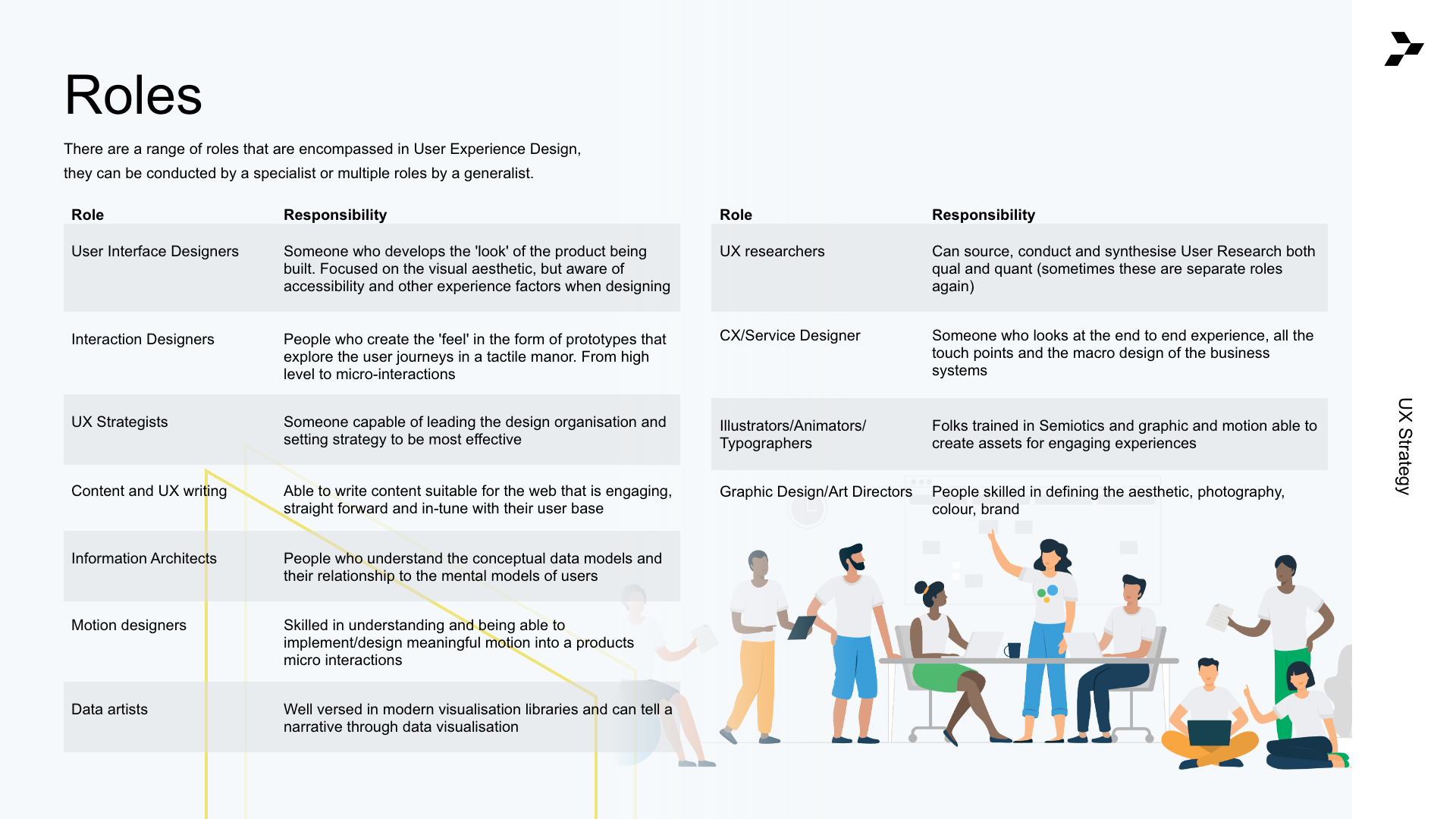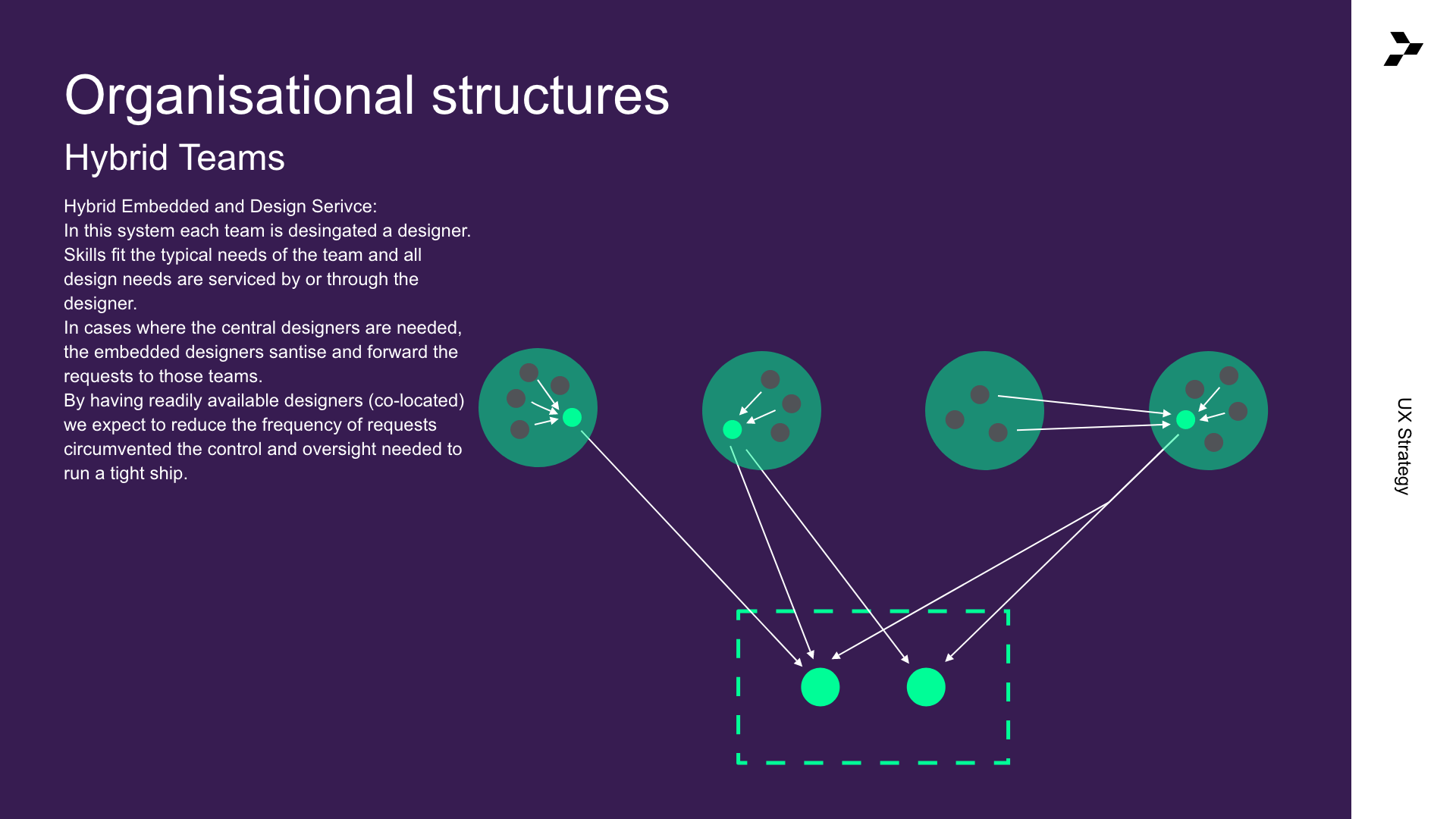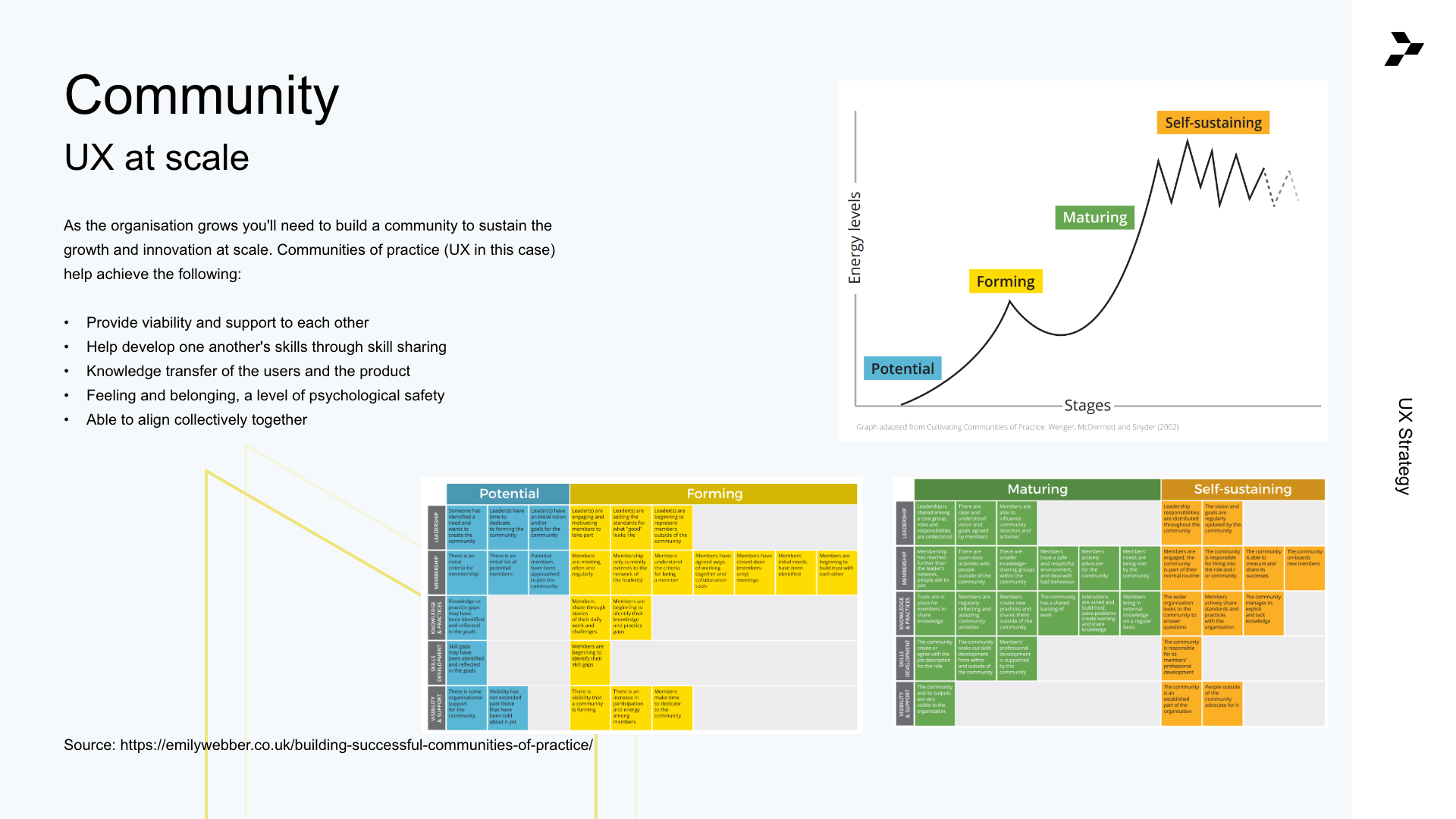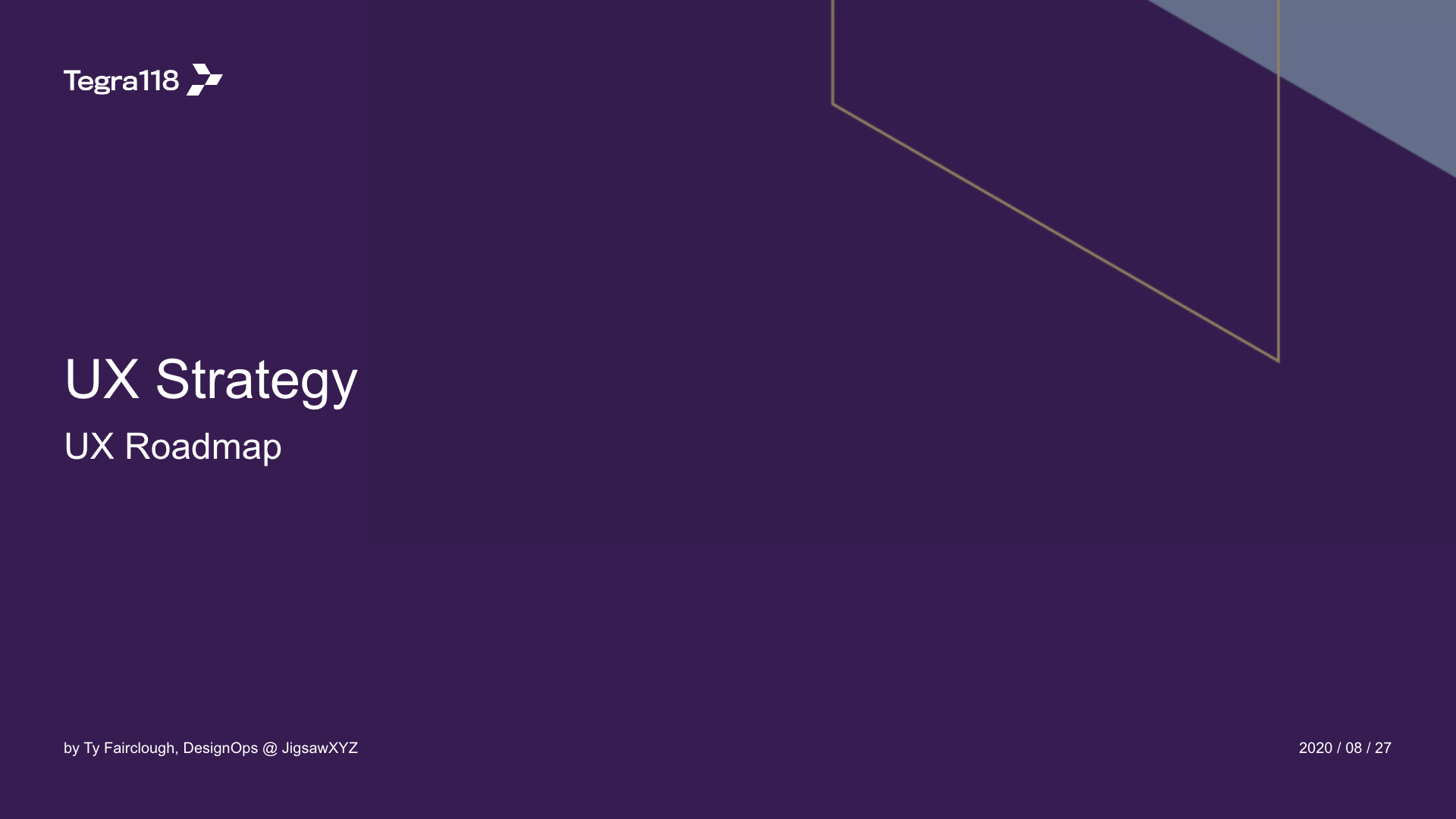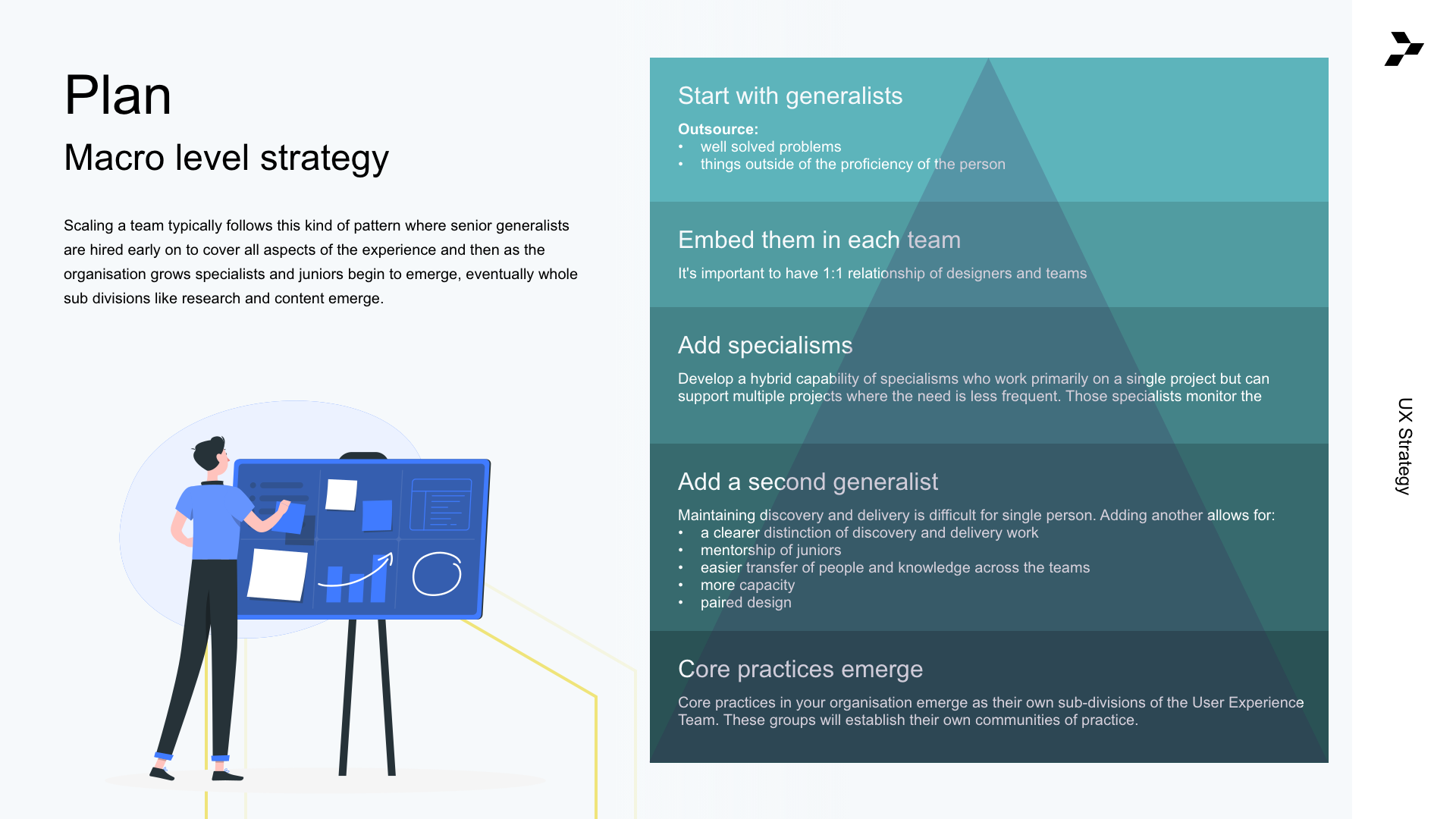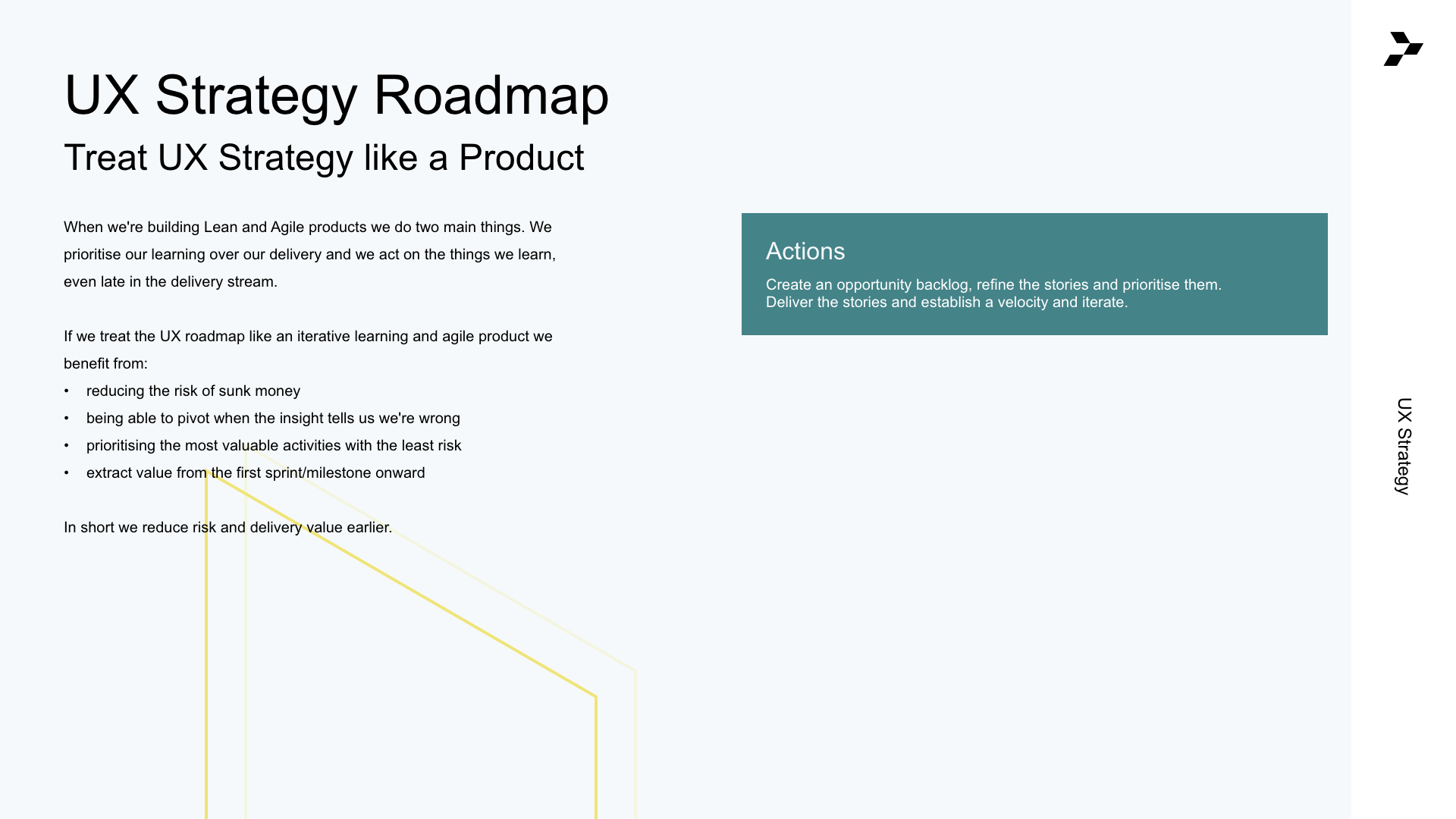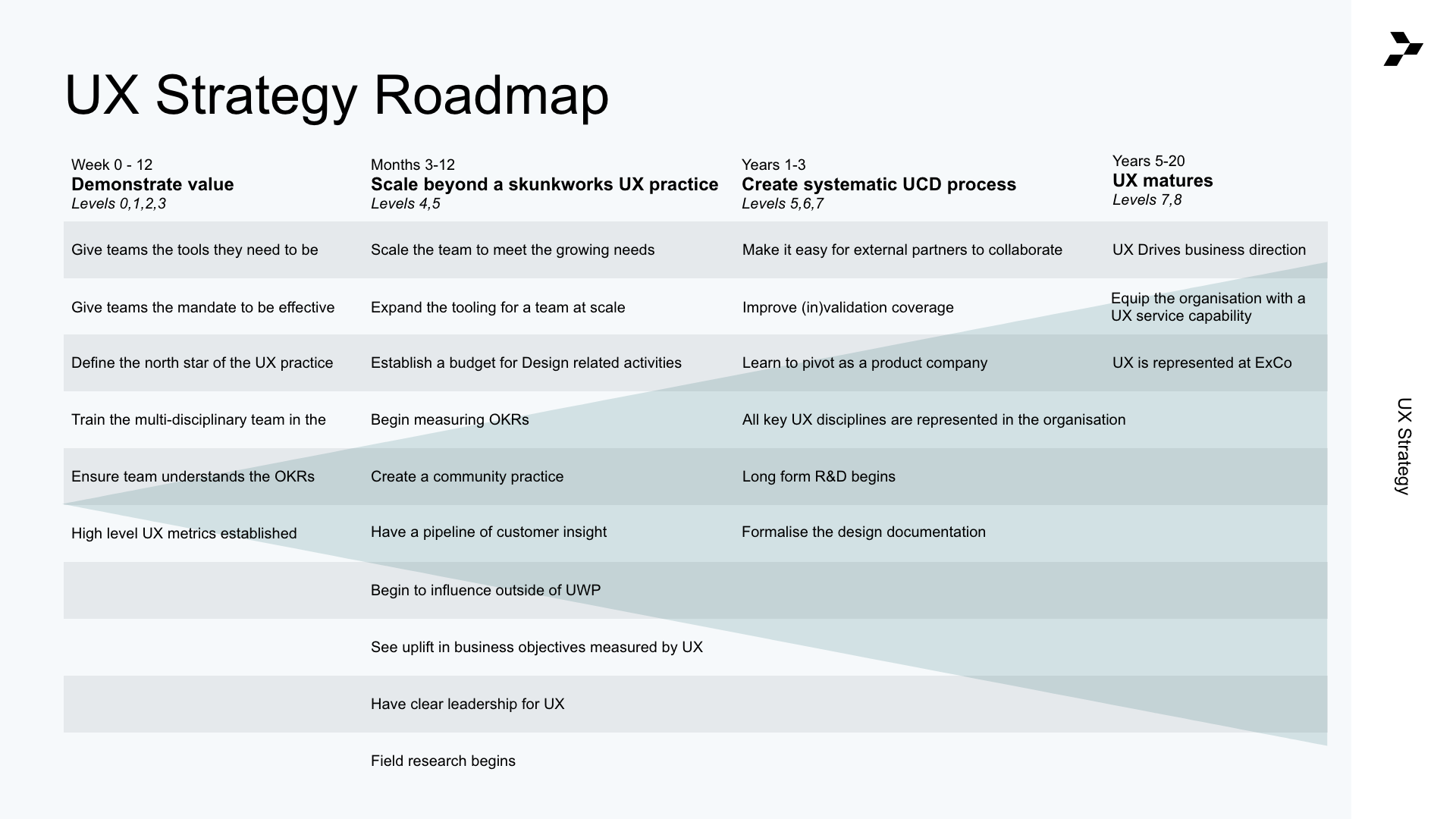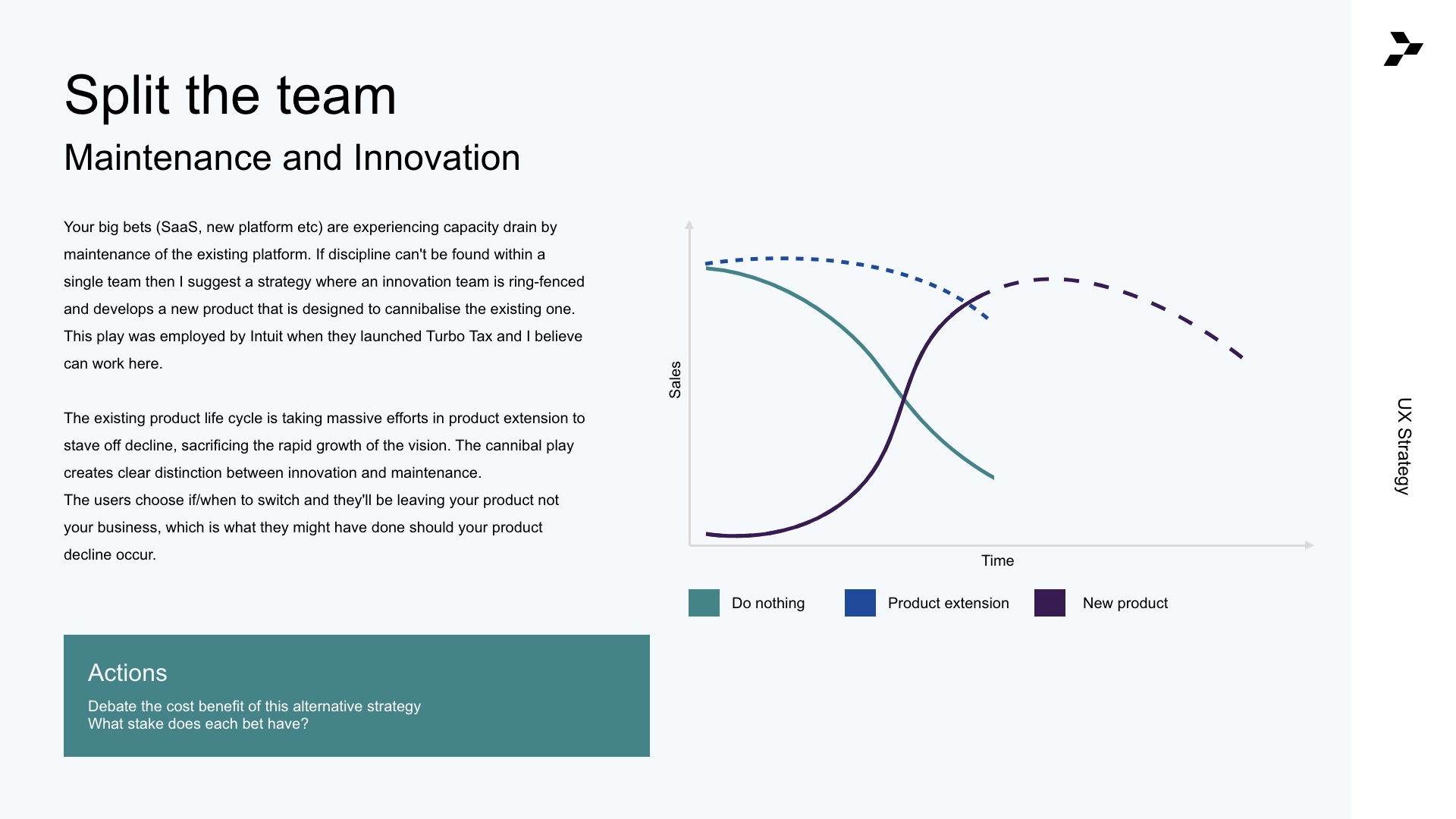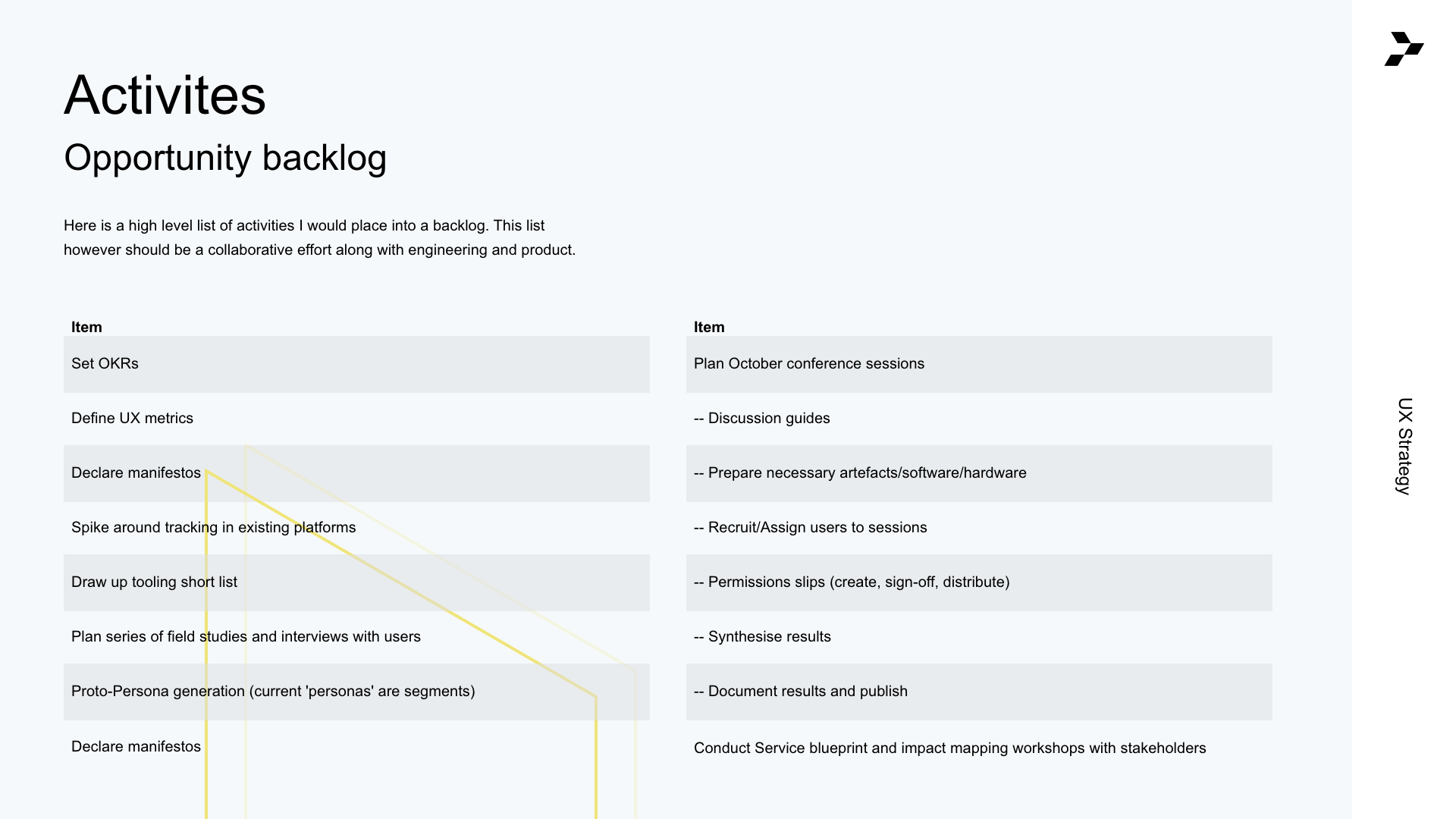
This is a story about how I planned to mature the UX practice in Tegra118 in order to set them up for long term success.


Embarking on a UX transformation project
Tegra118 were undergoing a digital transformation with a plan to update their ways of working and technology stack over the forthcoming 24-months. A few key stakeholders who held the purse strings had realised the strategic value of User Centered Design and the value of methodologies like Lean and Continous Discovery. They're ideas aligned to mine core beliefs and we embarked on a journey of elevating the organisations UX practice from a level 1 Design and Research organisation to mid-level operation.
Current State of UX @ Tegra118
My first task in my journey of developing a strategic plan was to first understand how mature Tegra118's UX was.
Spoiler alert! It was in the bottom rungs, but in any case I did a throughough evaltion of the people, processes, and current state of the products.
I used NNGroup and Jared Spool's UIE maturity stage benchmarks for UX and UXR respectively. Using these well regarded benchmarks made it clear to the stakeholders that this wasn't just an opinion on mine but a widely held understanding of what their practice constituted.
Starting at the top
I had to level up the key stakeholders around what design is and how design works in modern product companies. Emphasising how design is integral to the delivery of products meant explaining basic theory like the Kano model, continous discovery, and the role of Design Thinking in business.
Selling UX
The organisation had no idea how how valuable UX was or how to measure it. I leaned on McKinsey's work on the business value of Design to drive buy-in and then explained how we could measure the impact using both leading and lagging metrics.
A bad workperson blames their tools
Deliverables
People
Roadmap
All of the ideas, new ways of working, and changes to the organisation's topography had to roll-up into a wider digital transformation project which demanded a roadmap of changes for the next 18-24 months.
I really tried to drive home how the same methods used in Design Thinking should be applied to the delivery of a UX capability. That means being Agile and prioritising learning to steer the growth of the capability.
Documents
These slidedecks provide the
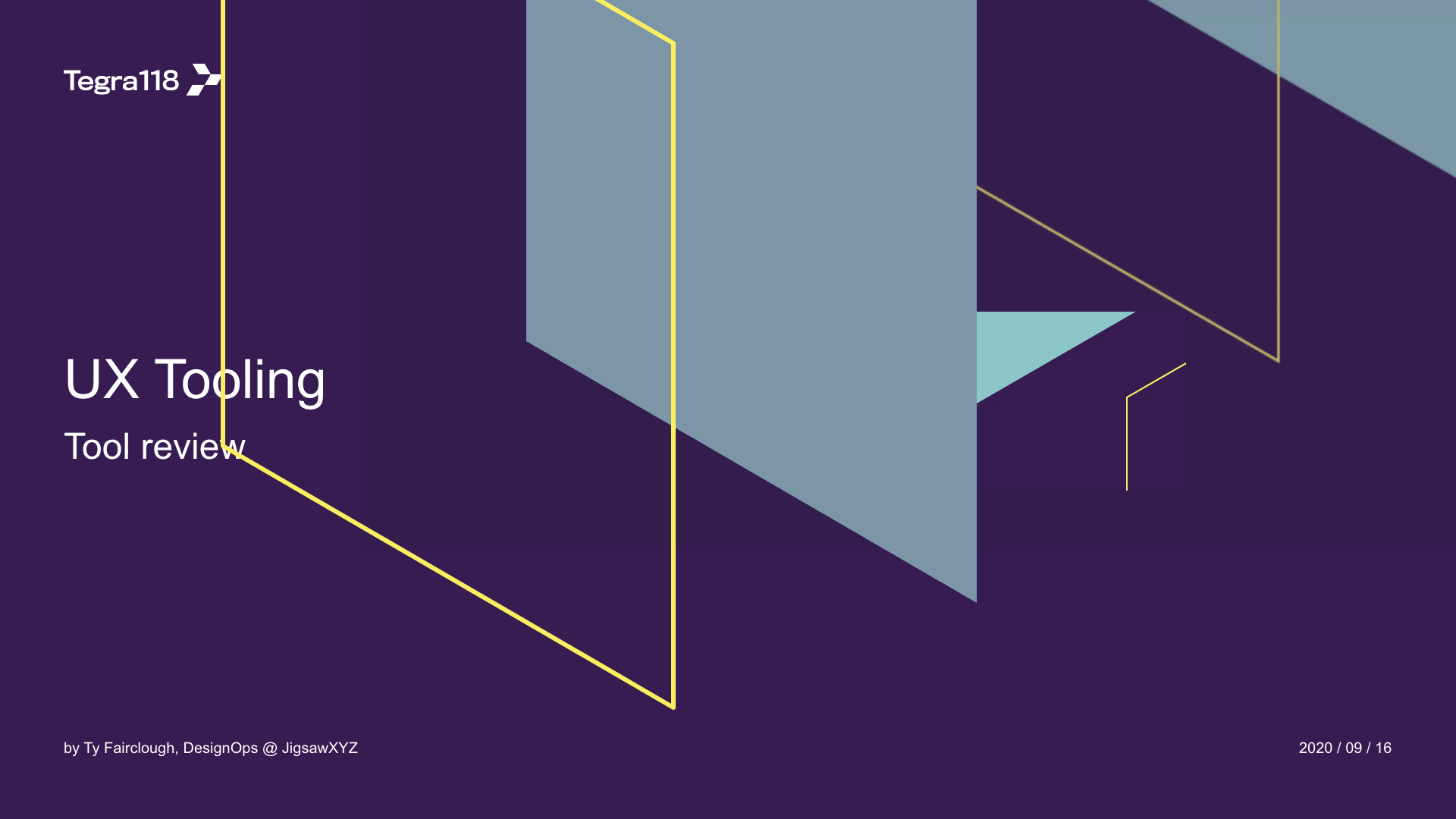
Tooling review
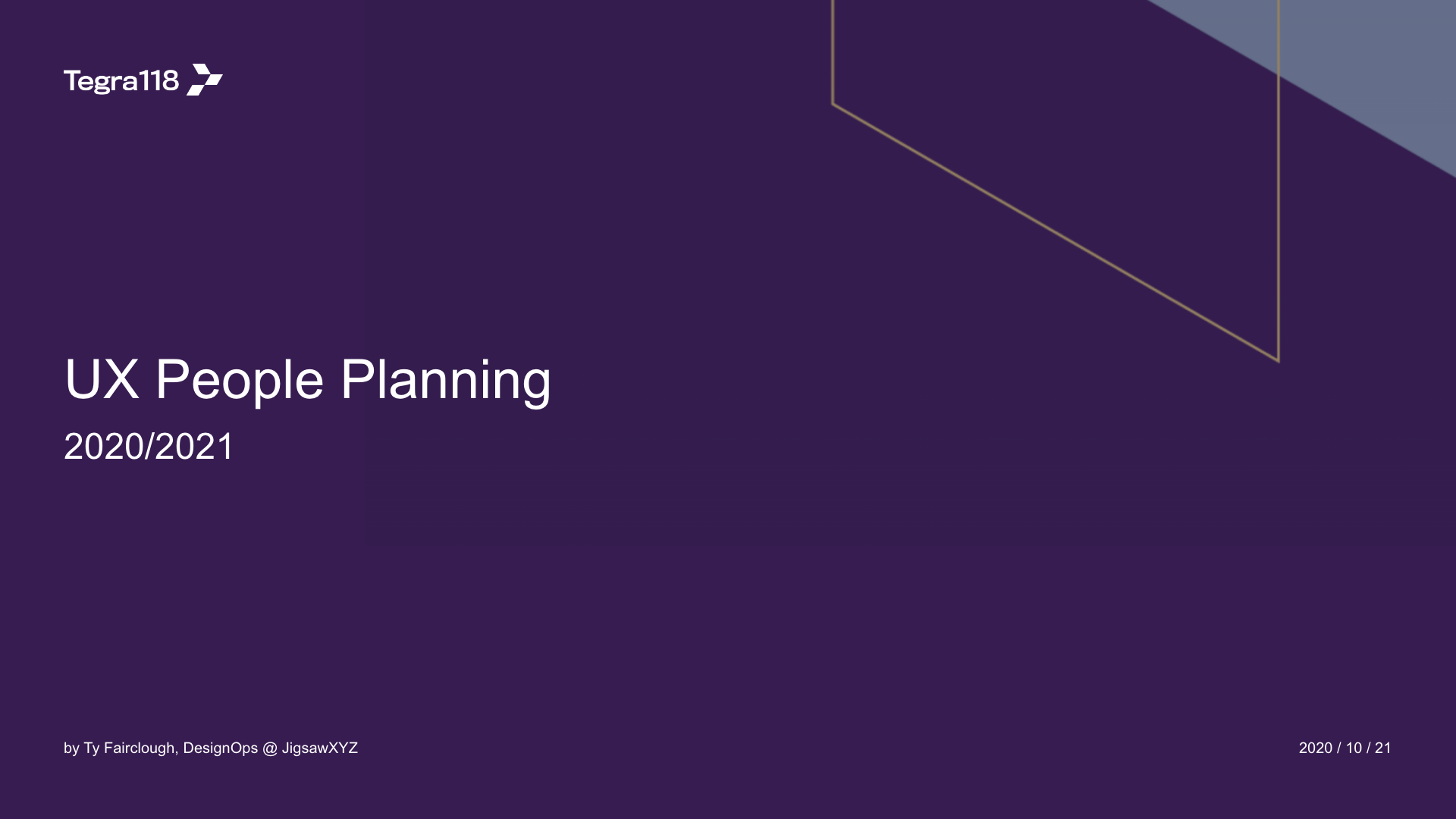
People Plan
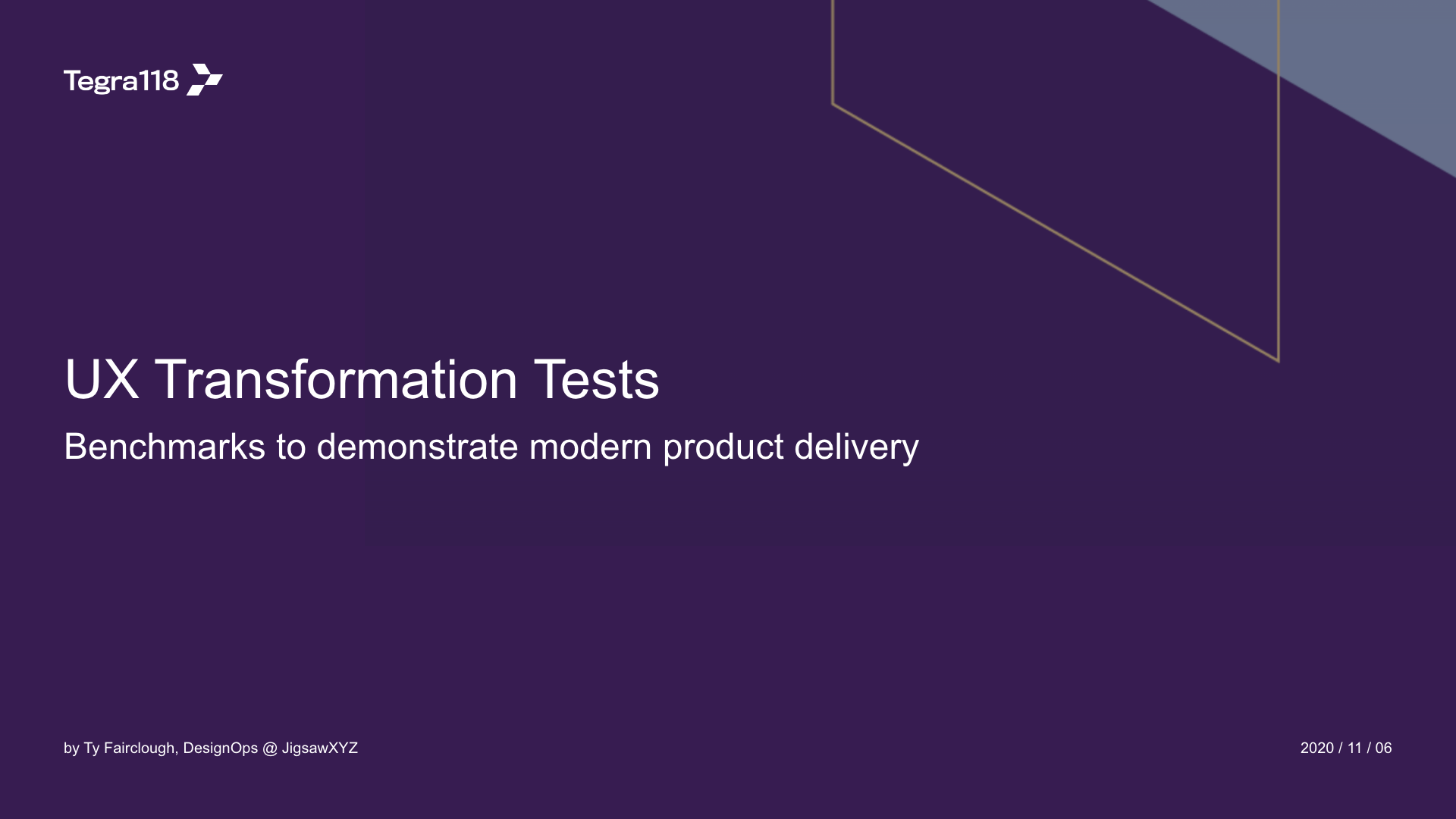
Transformation Tests
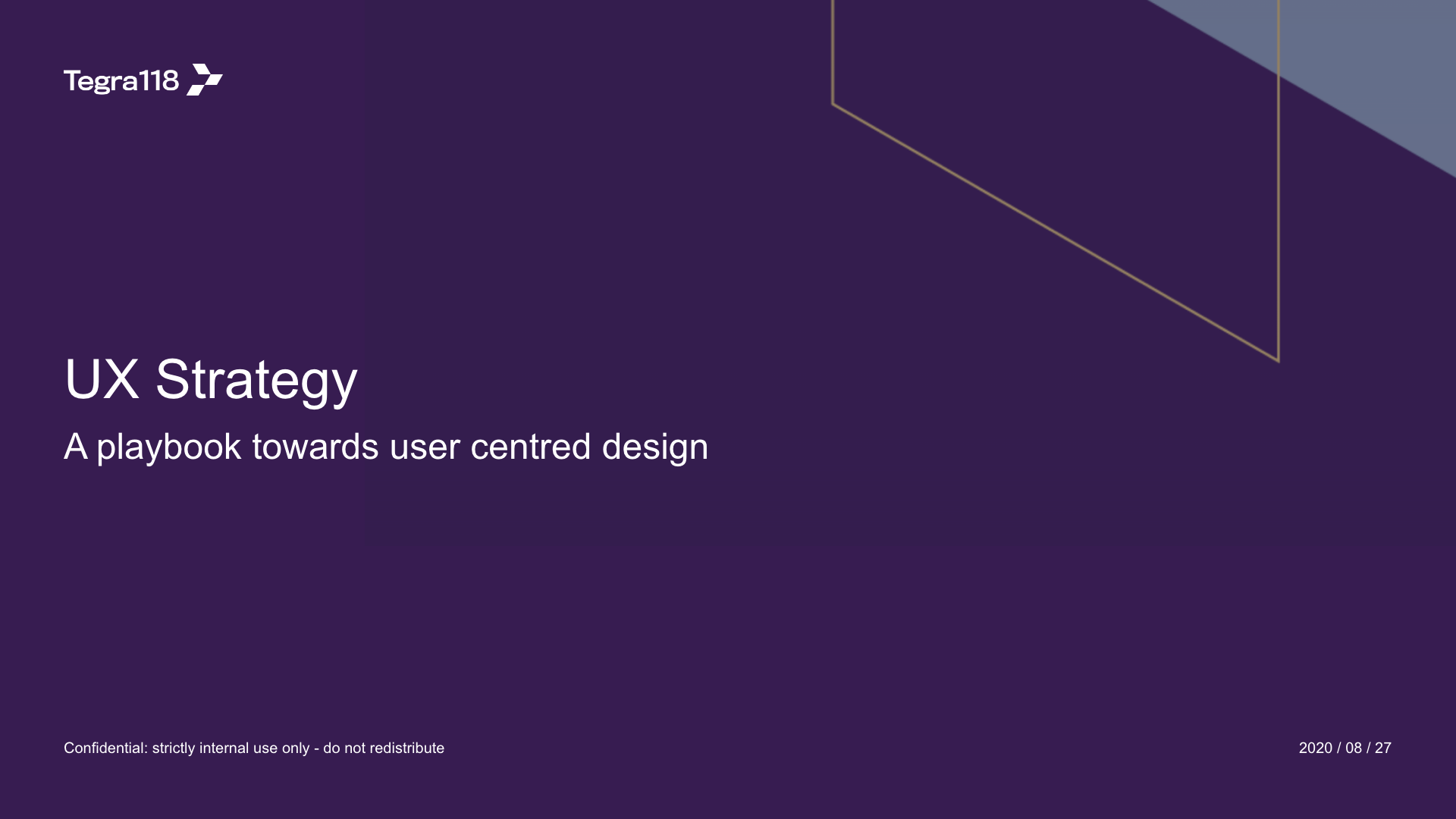
UX Research

